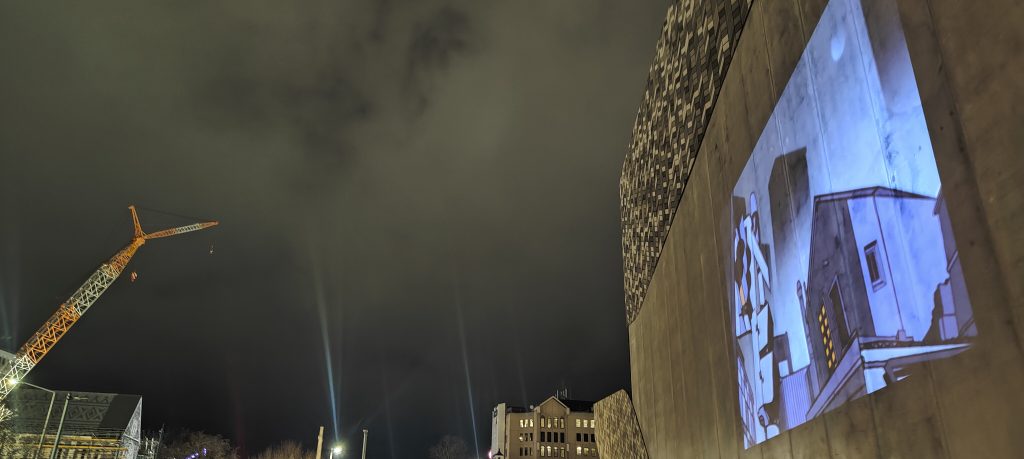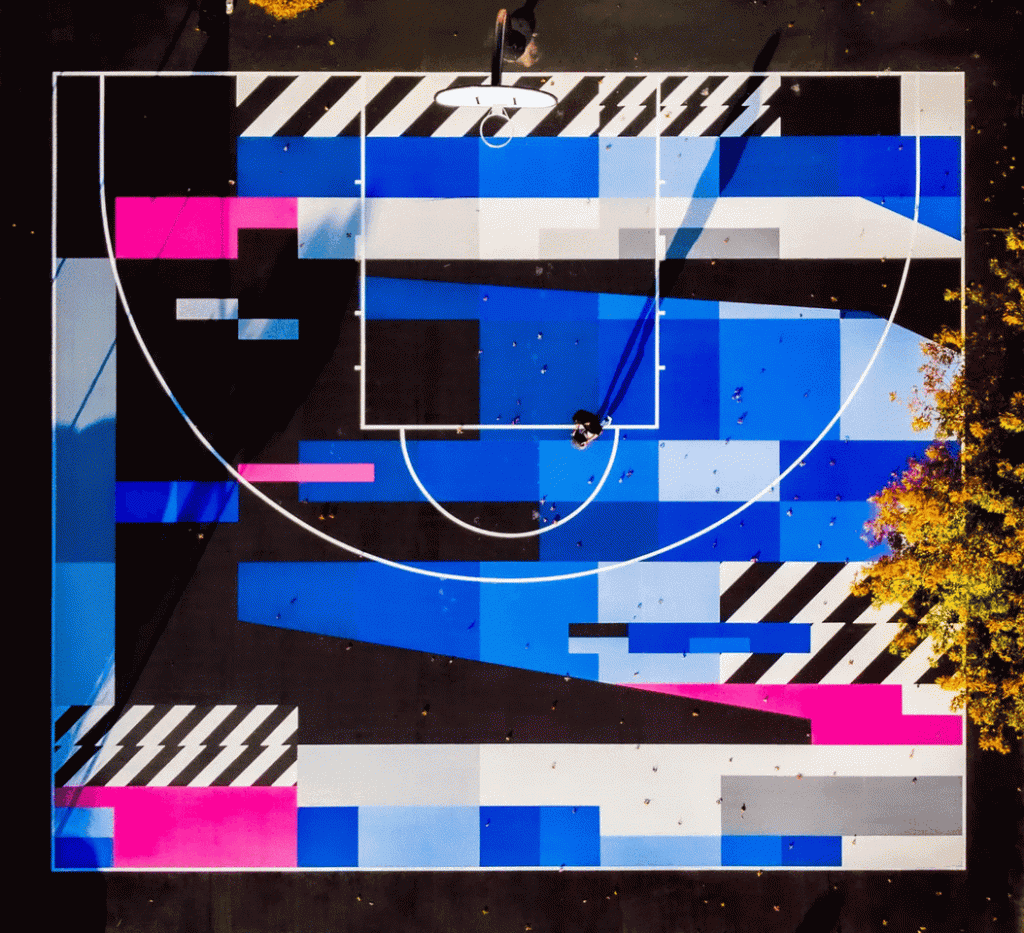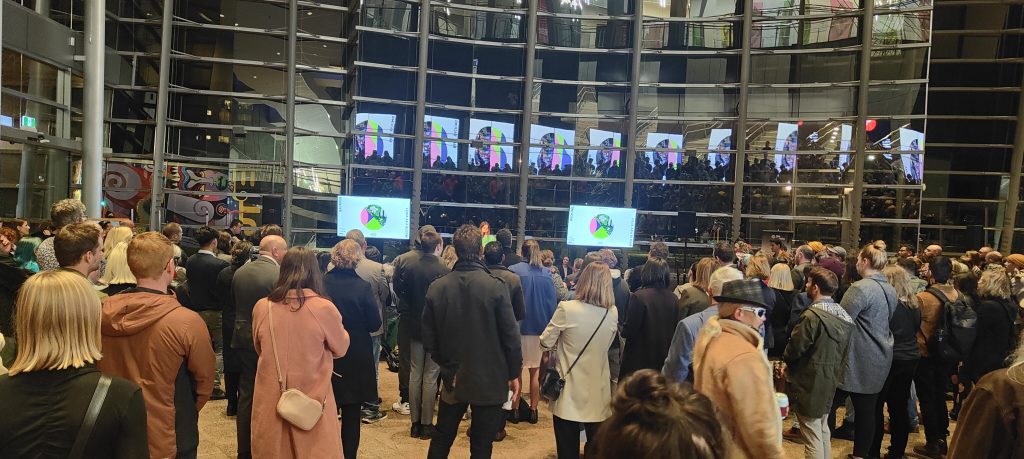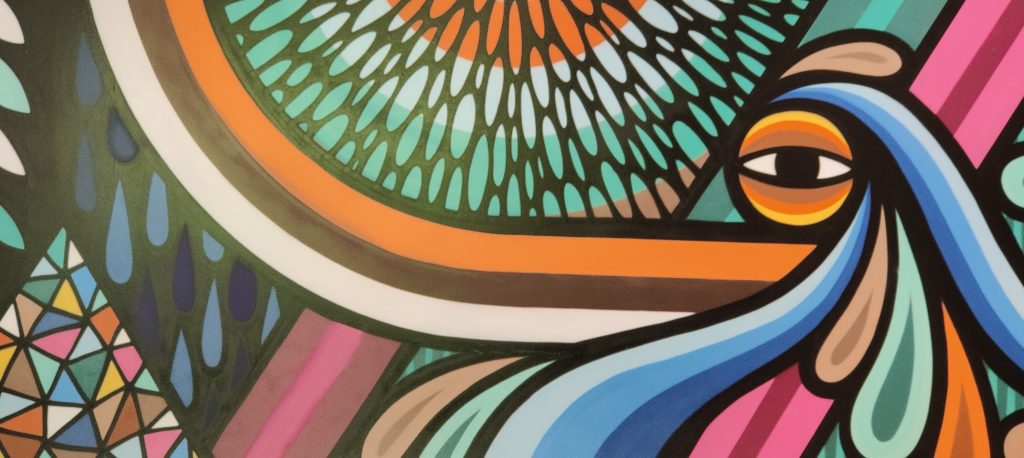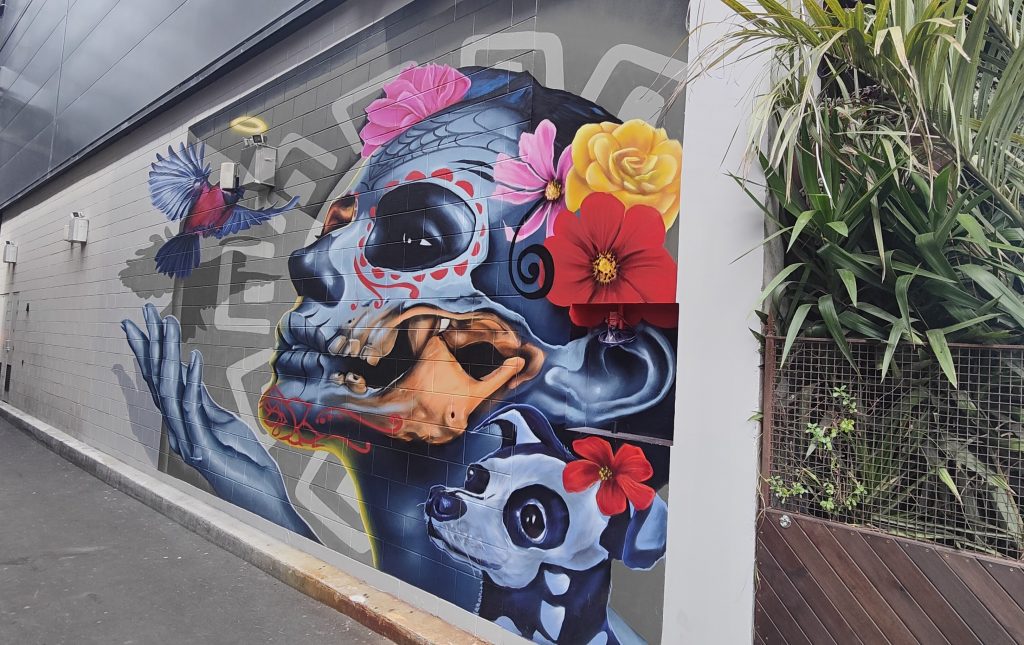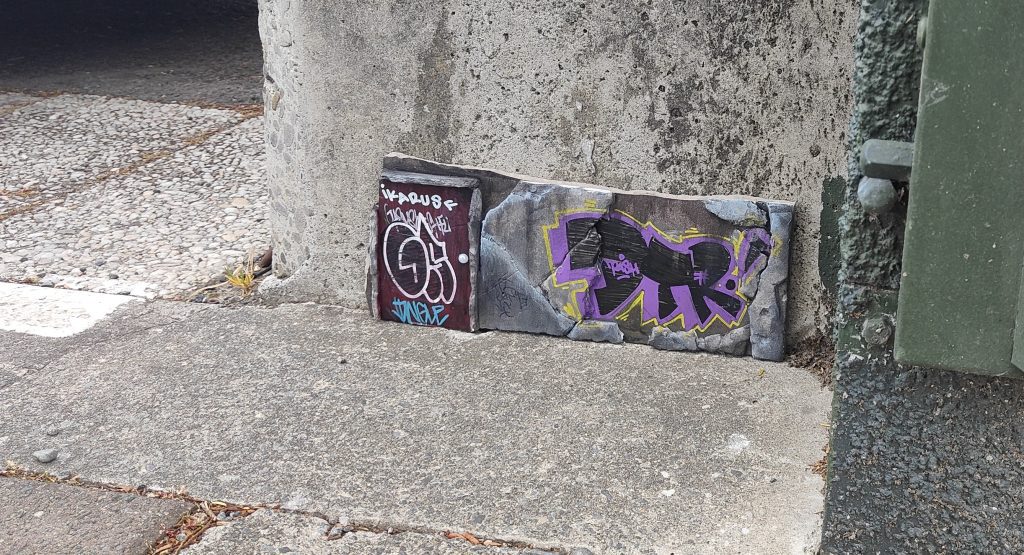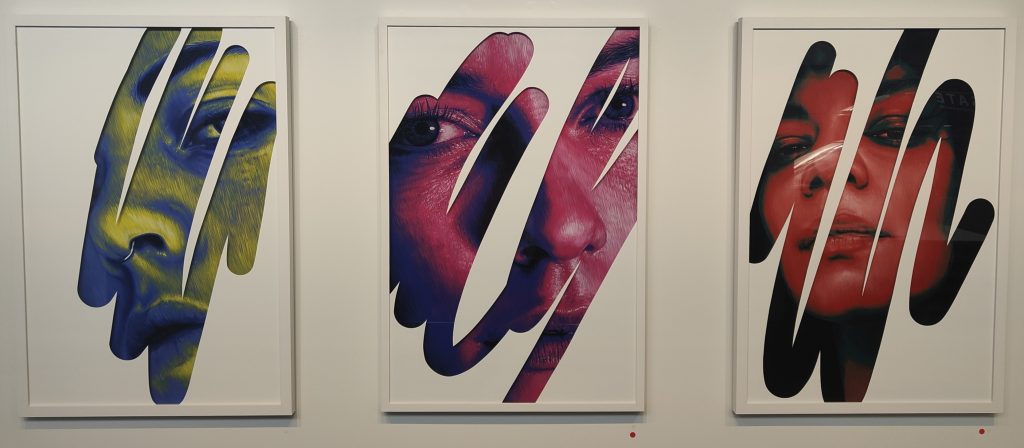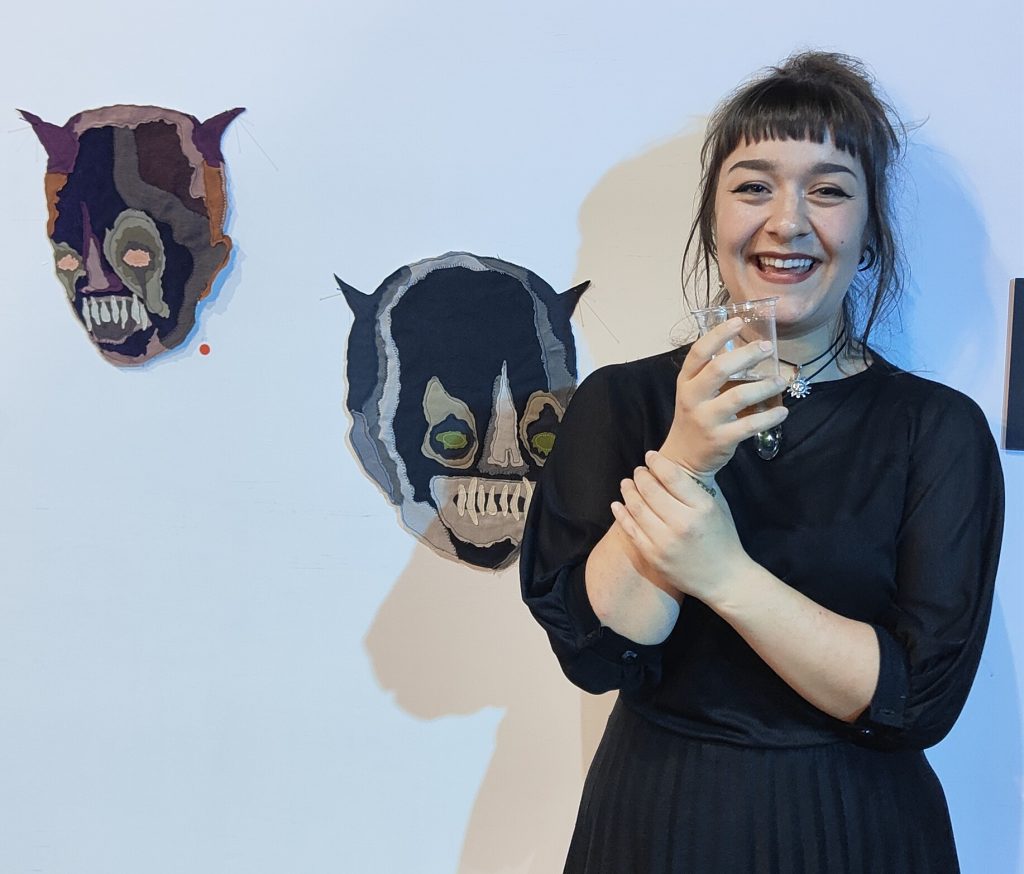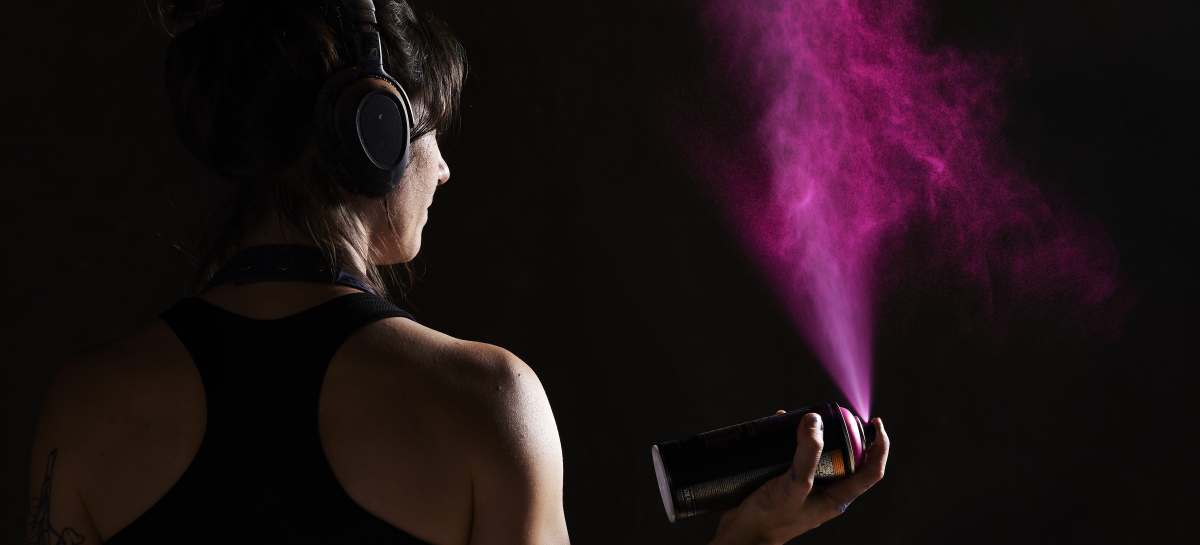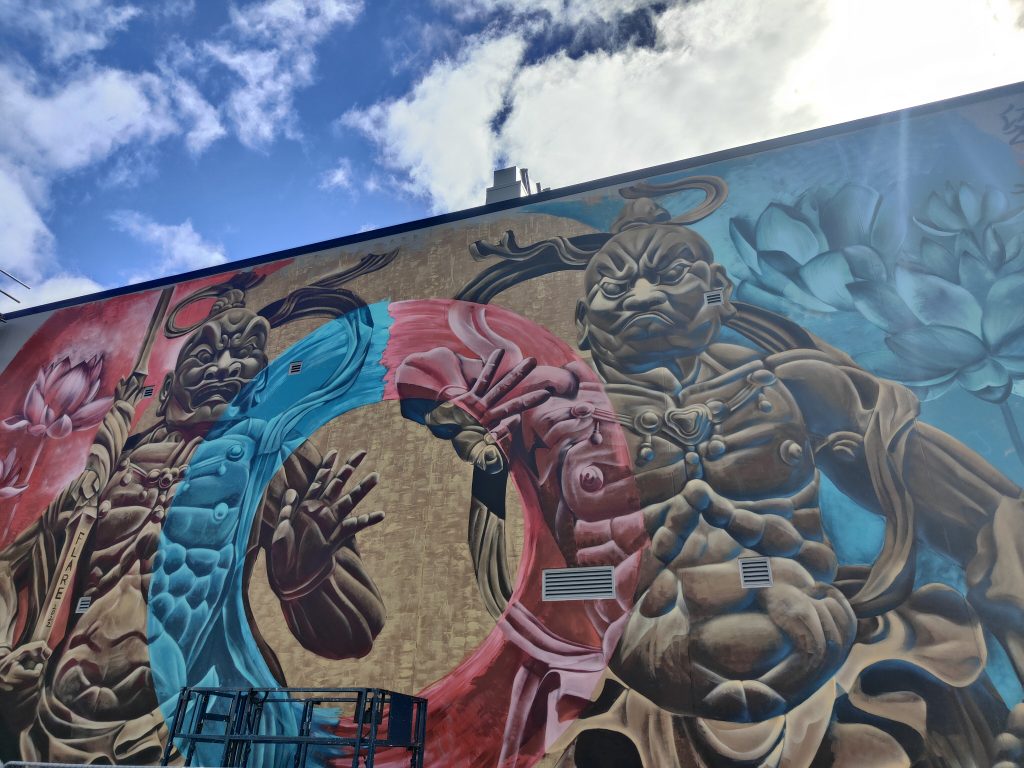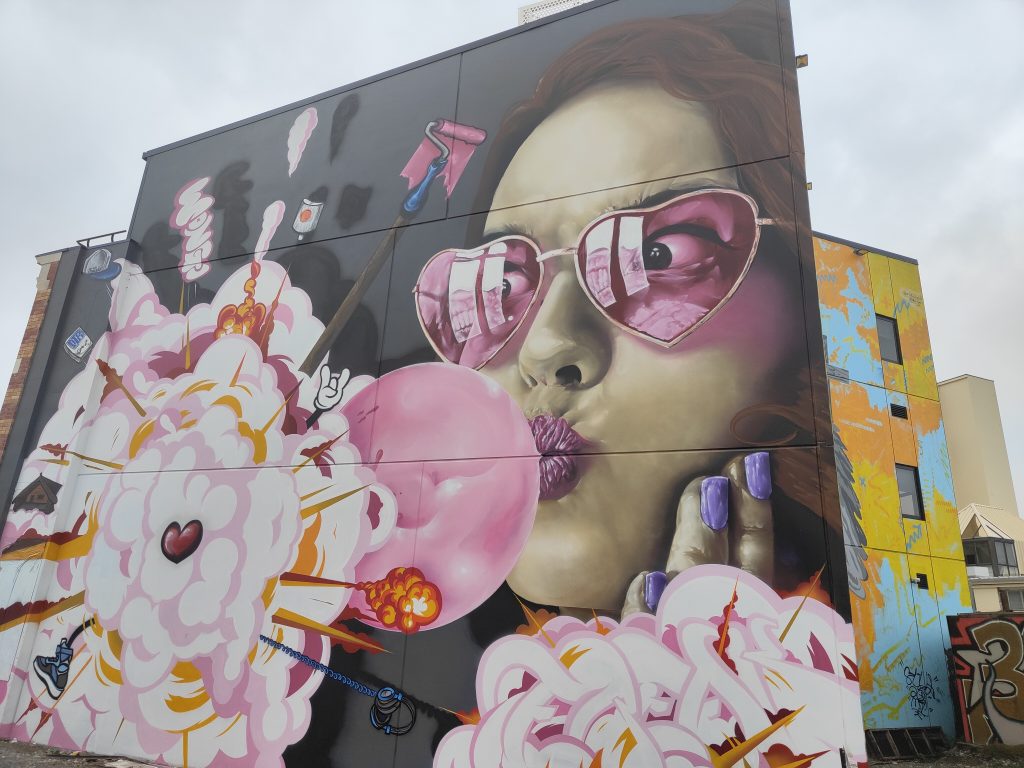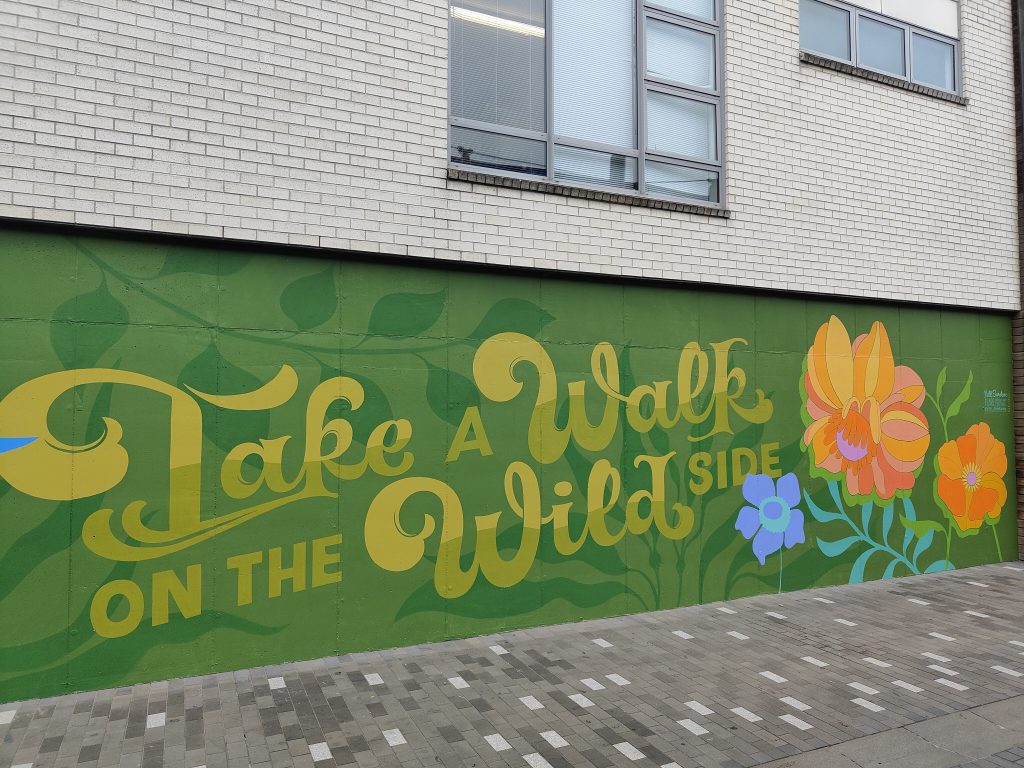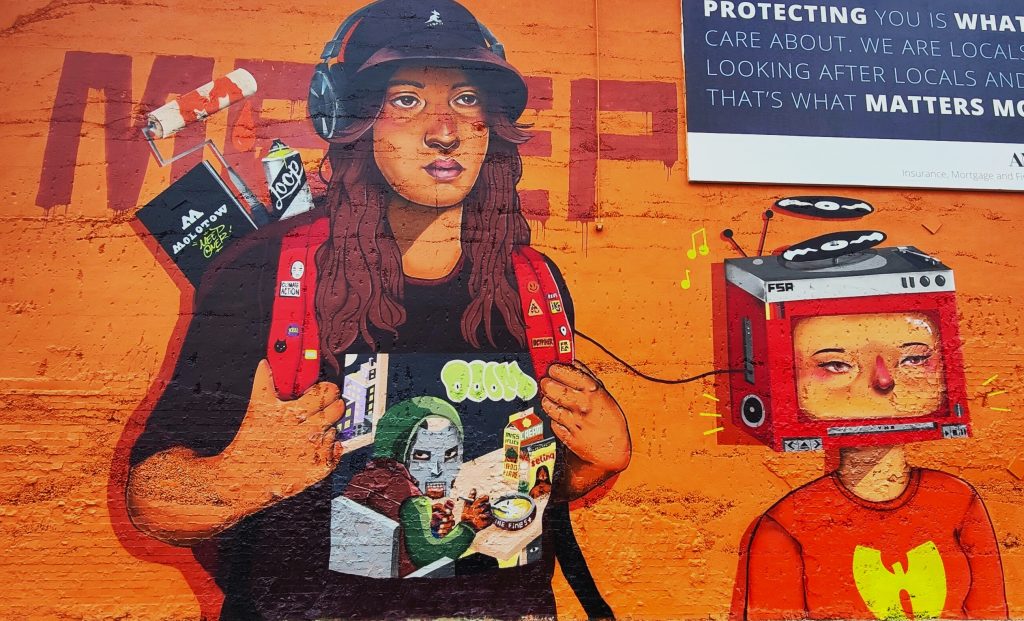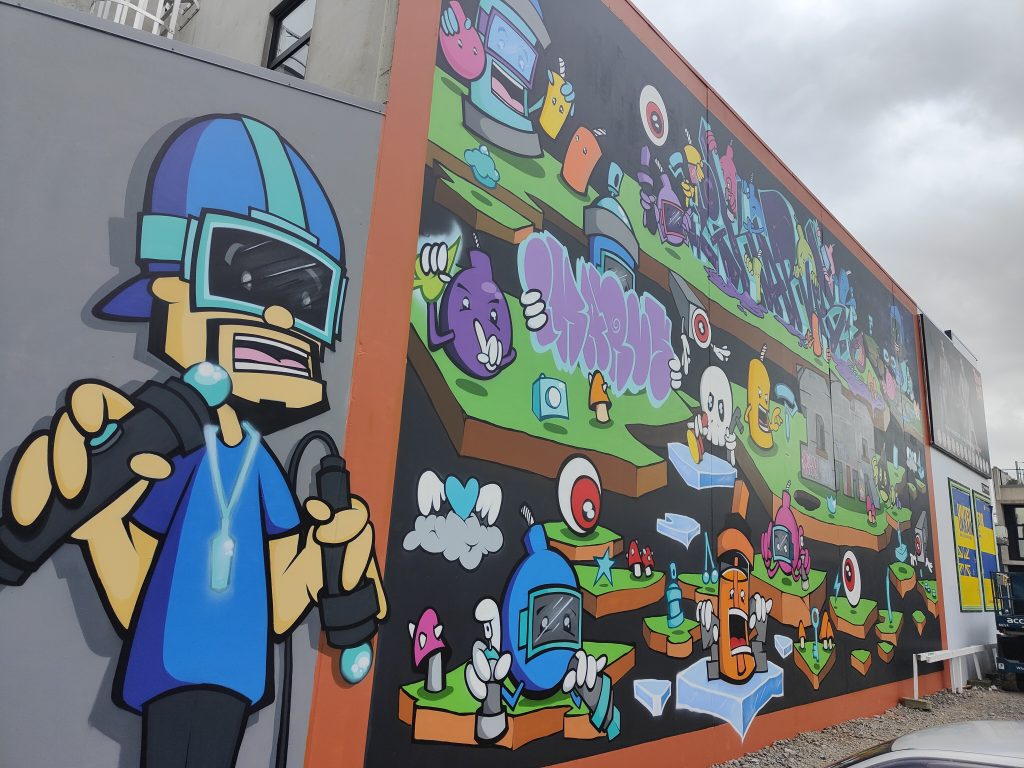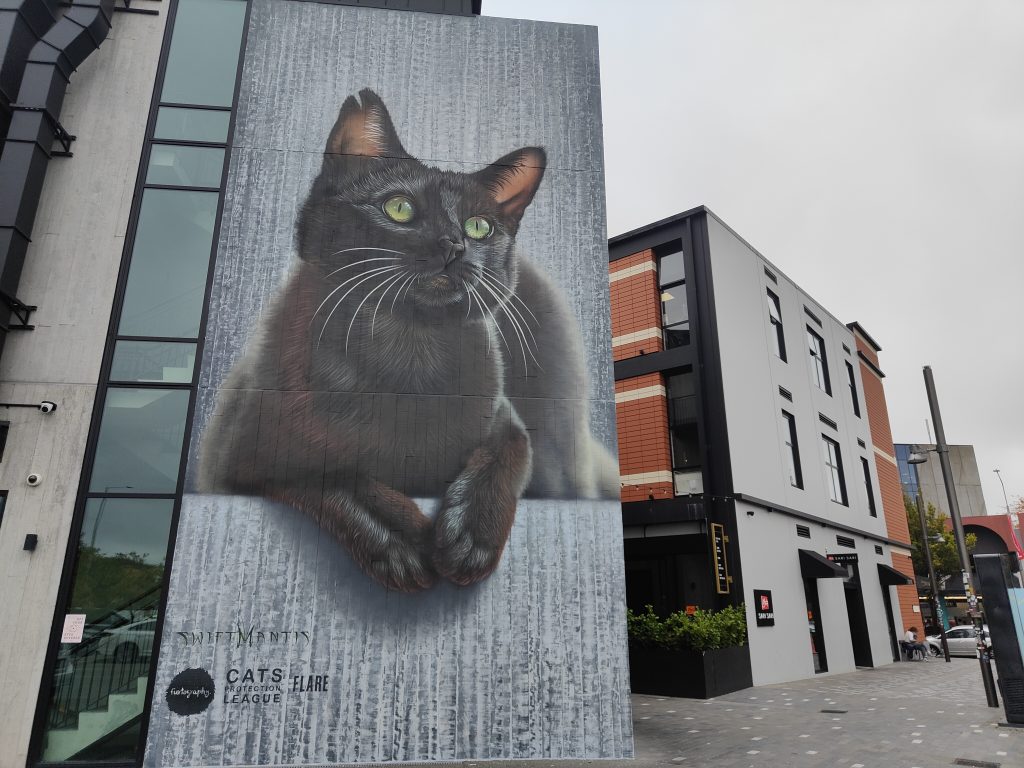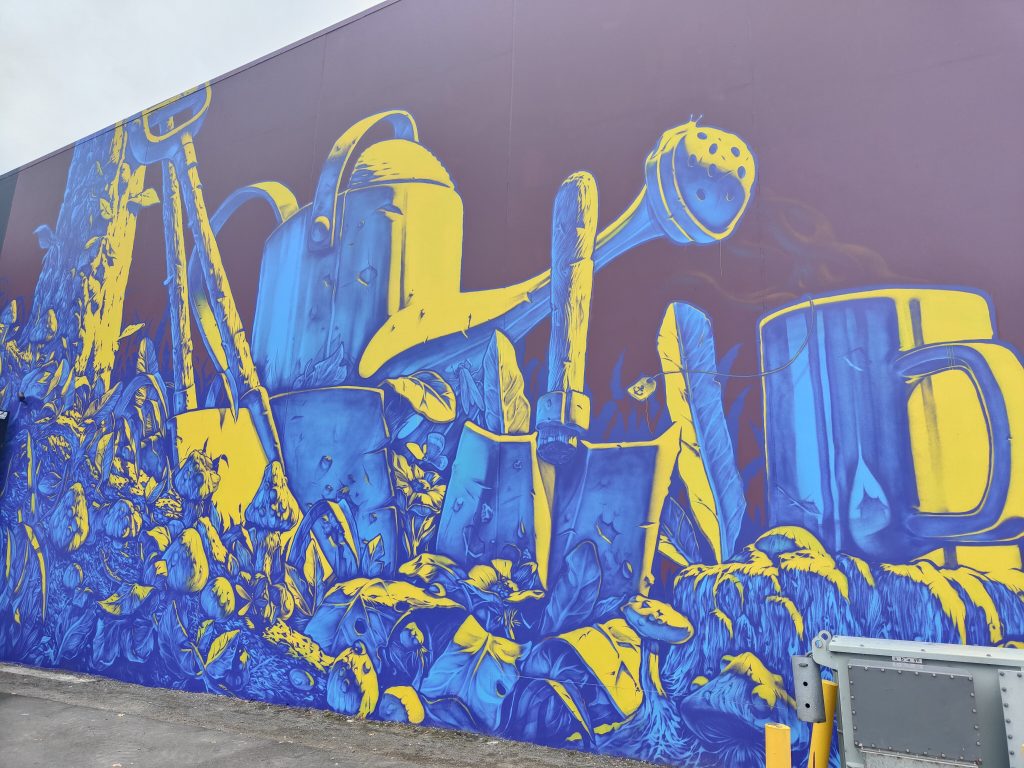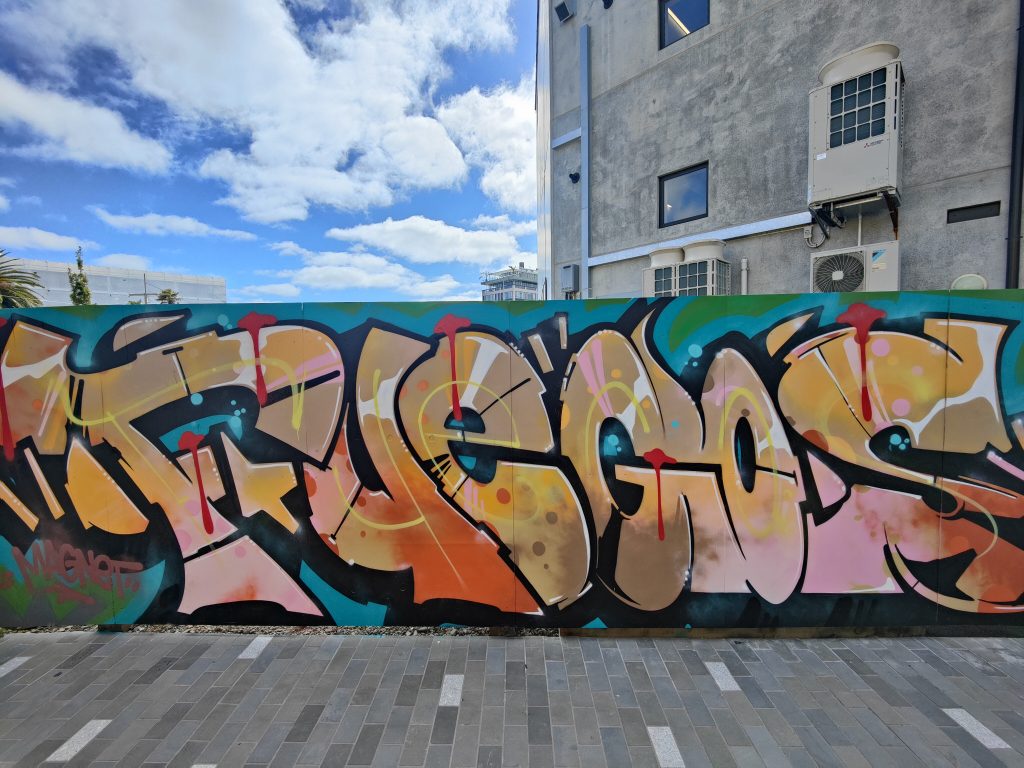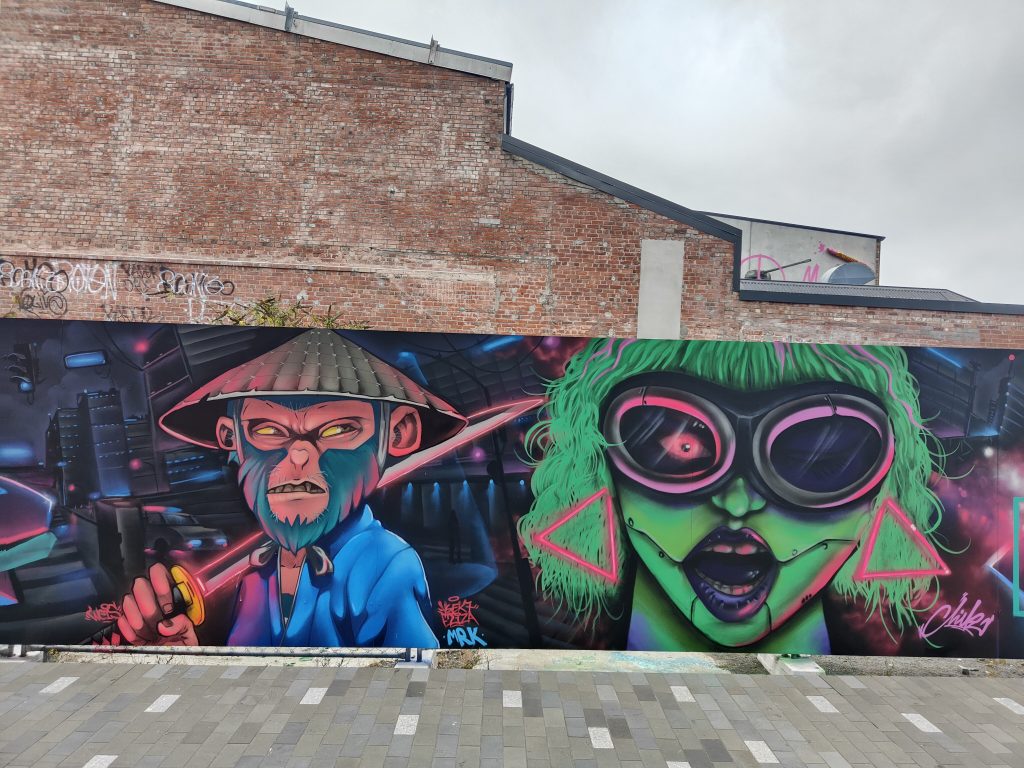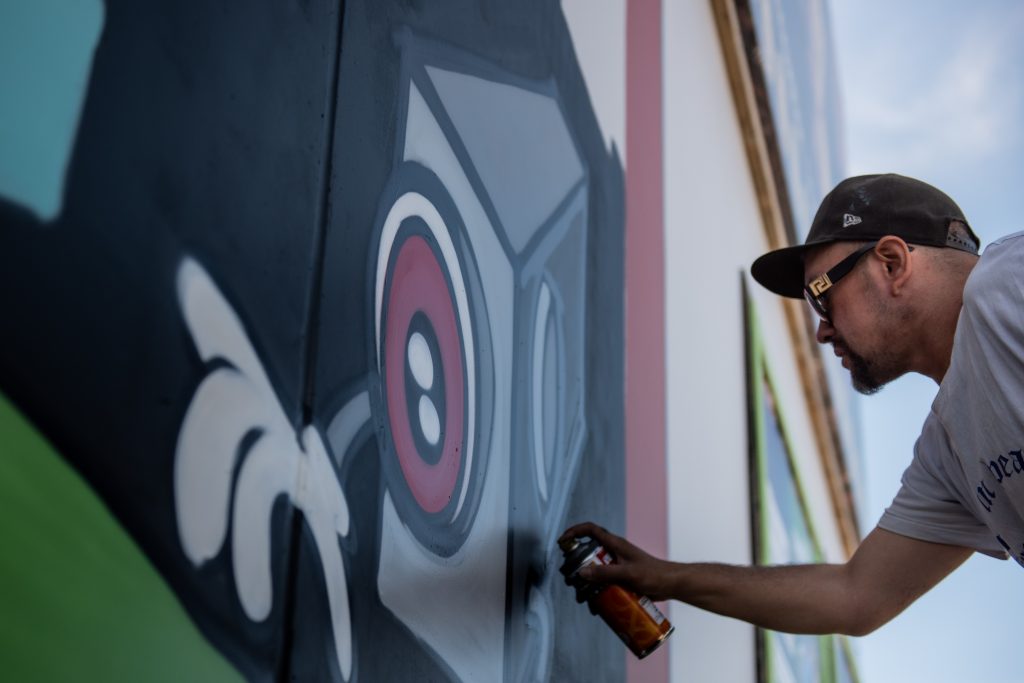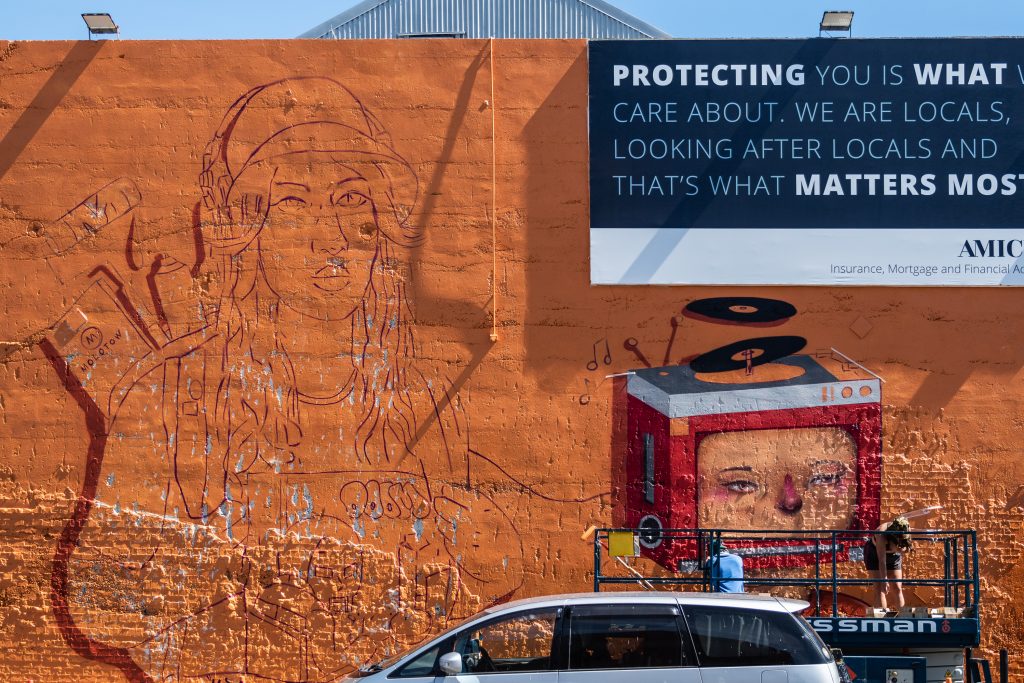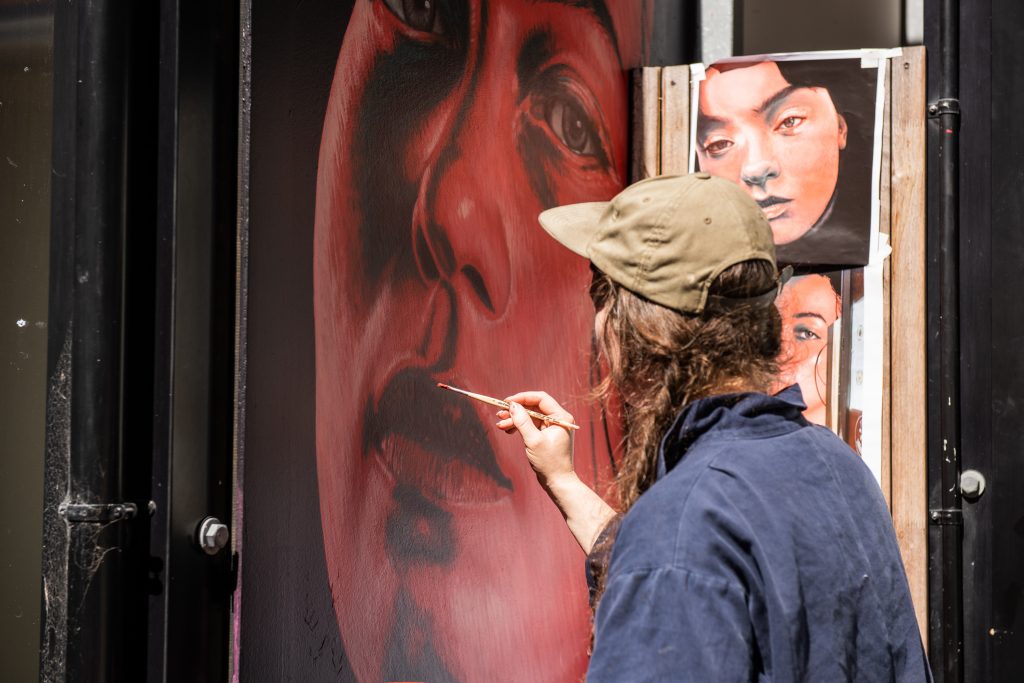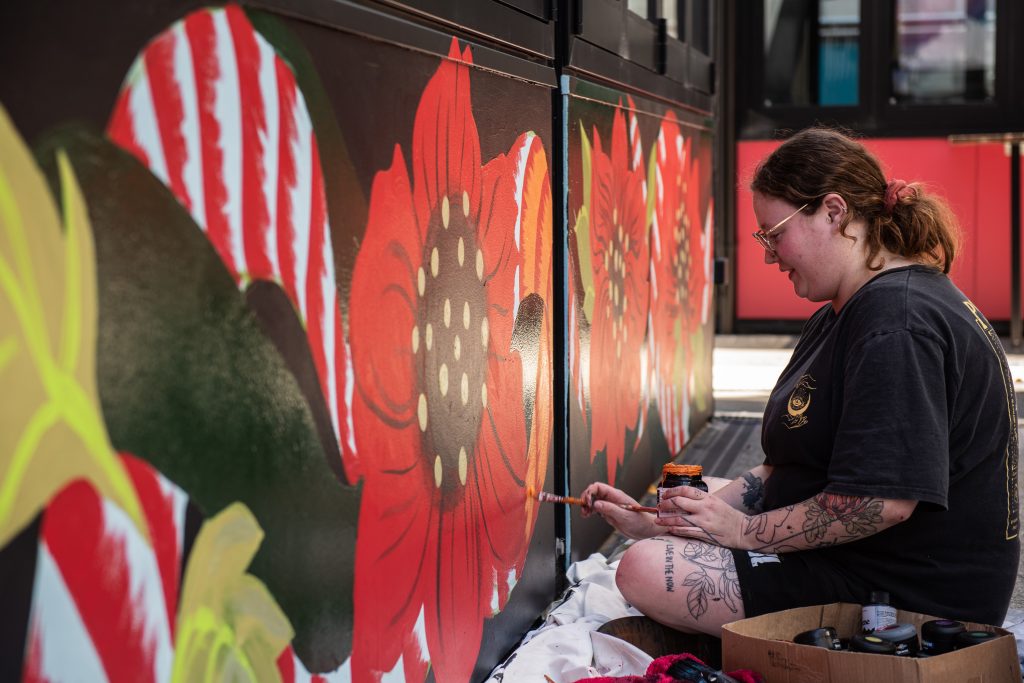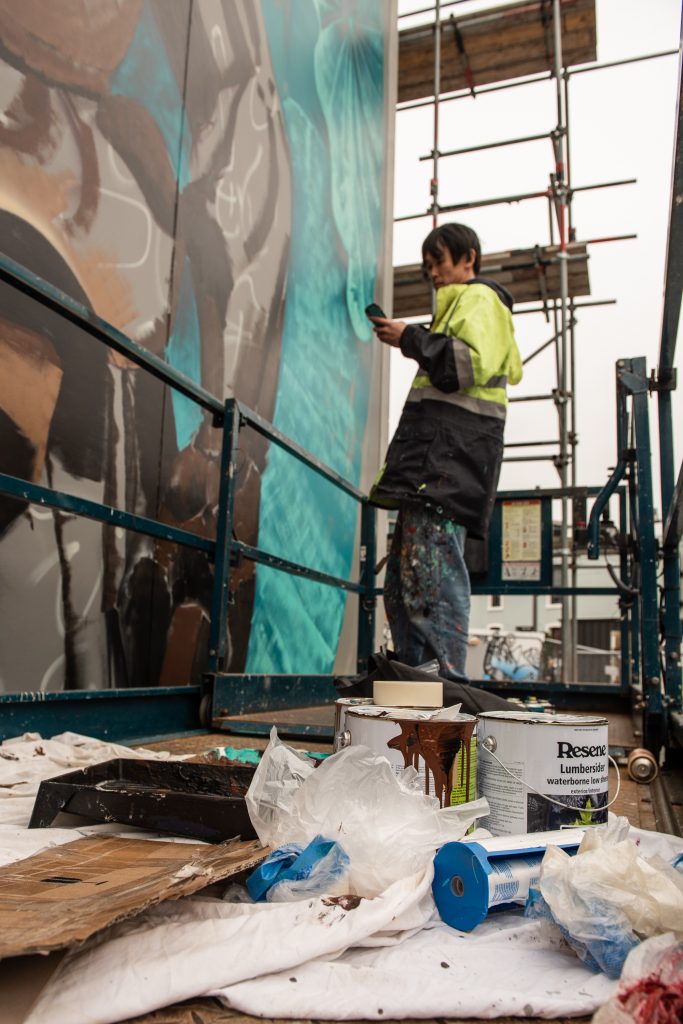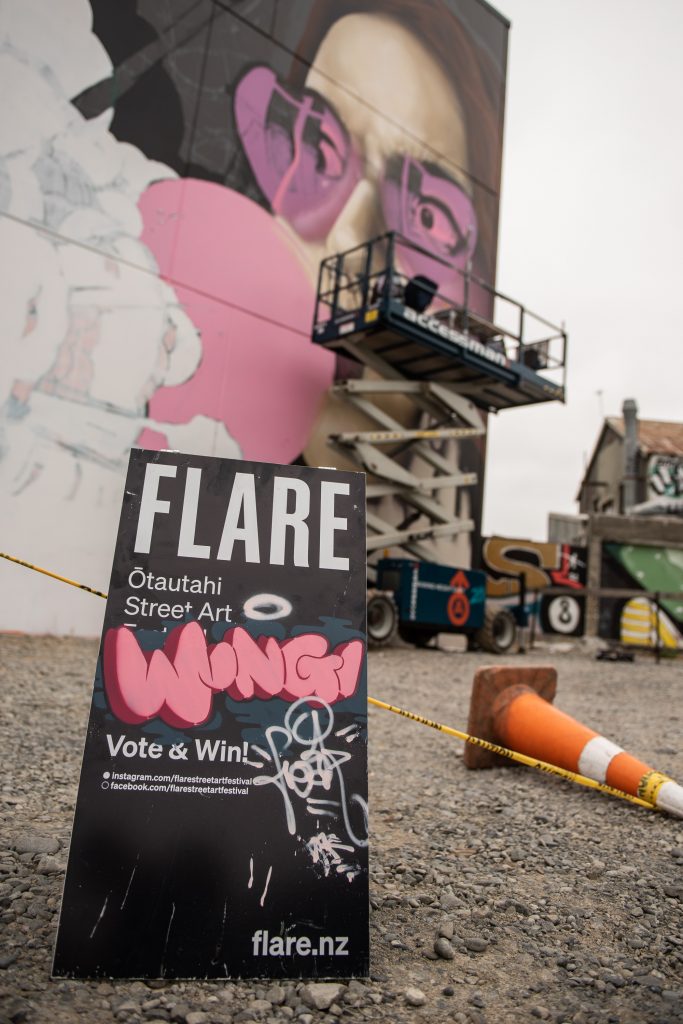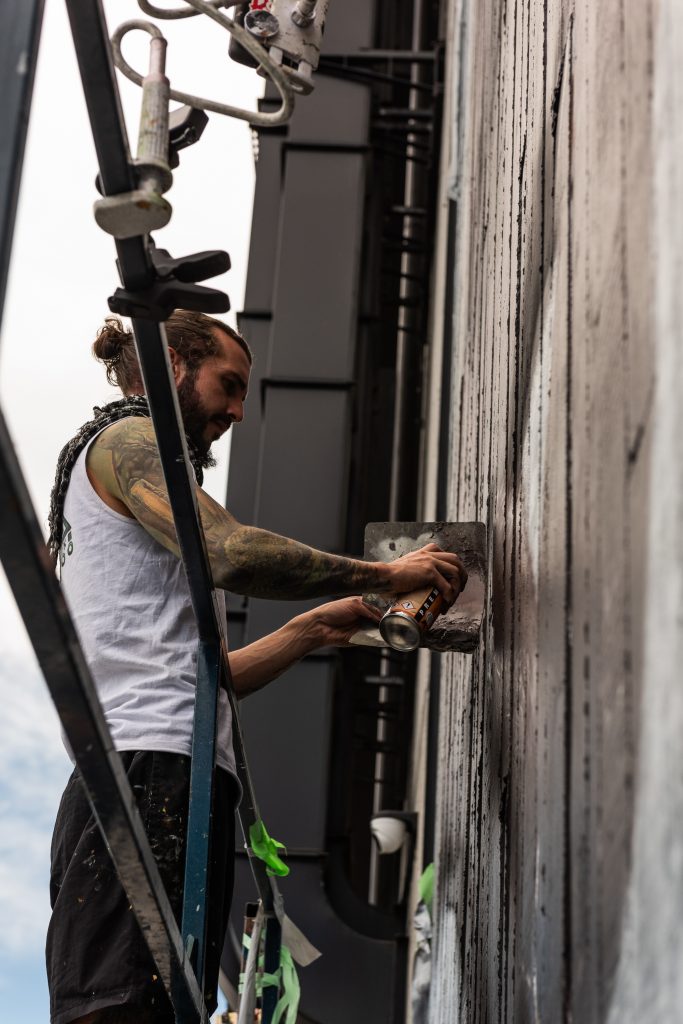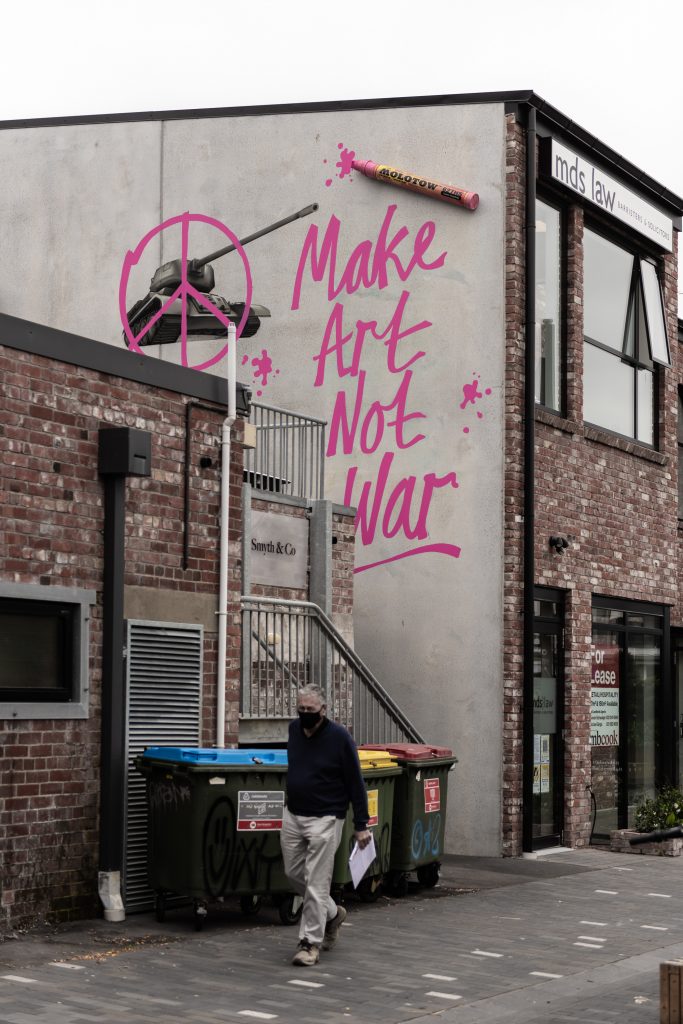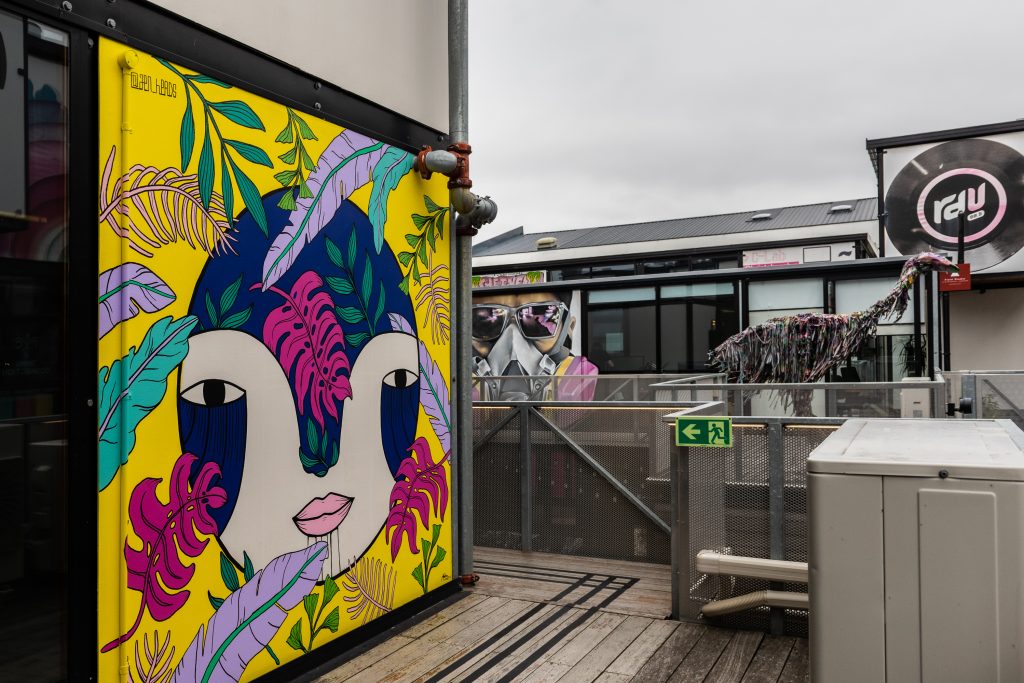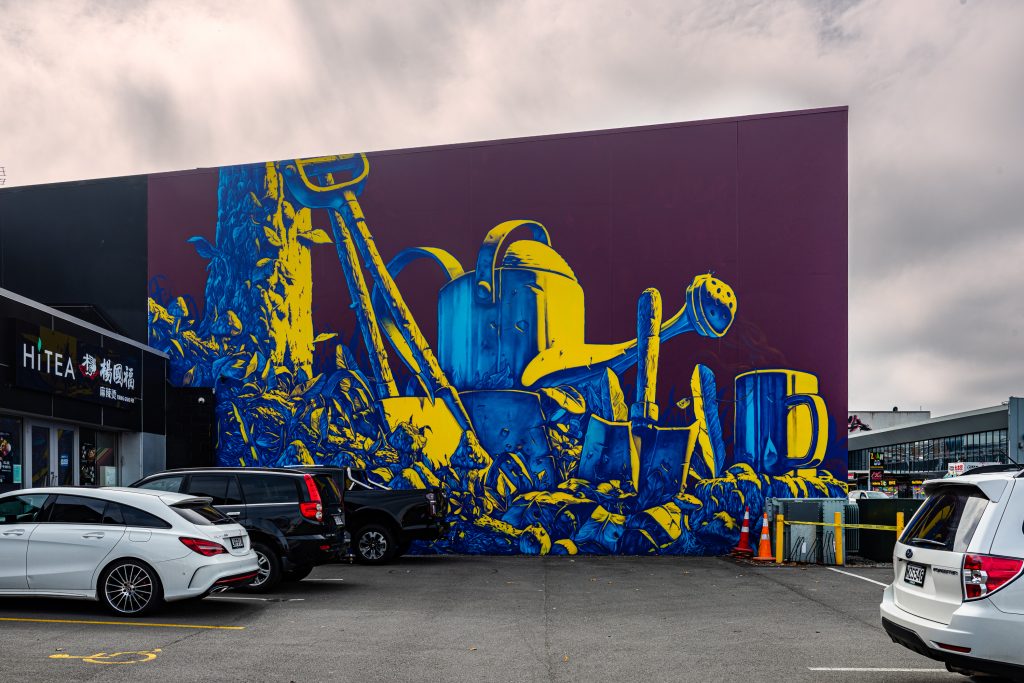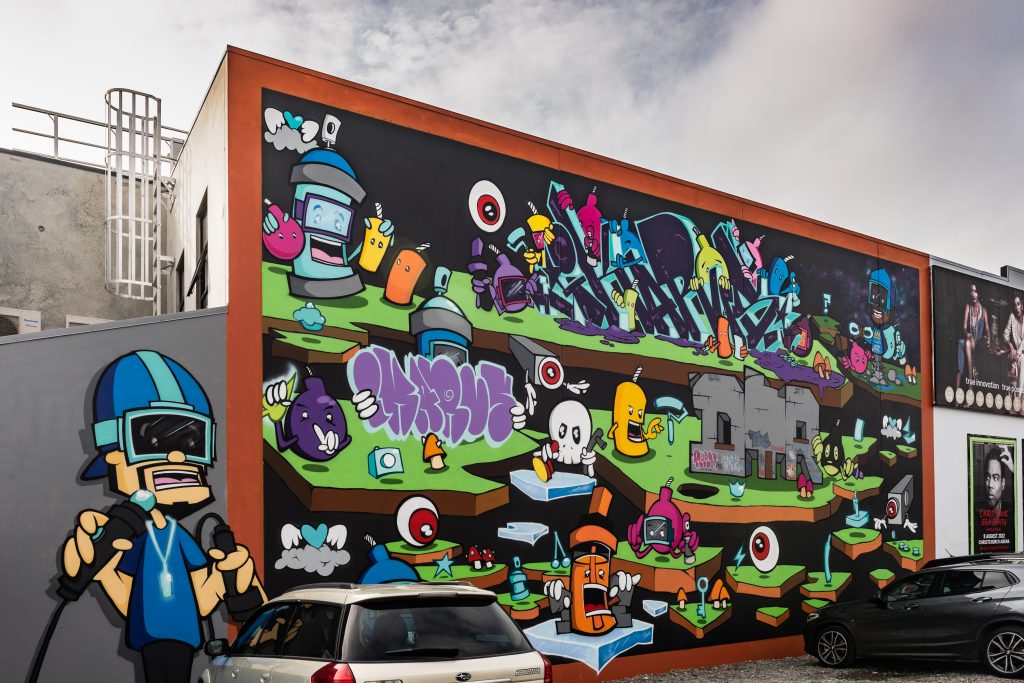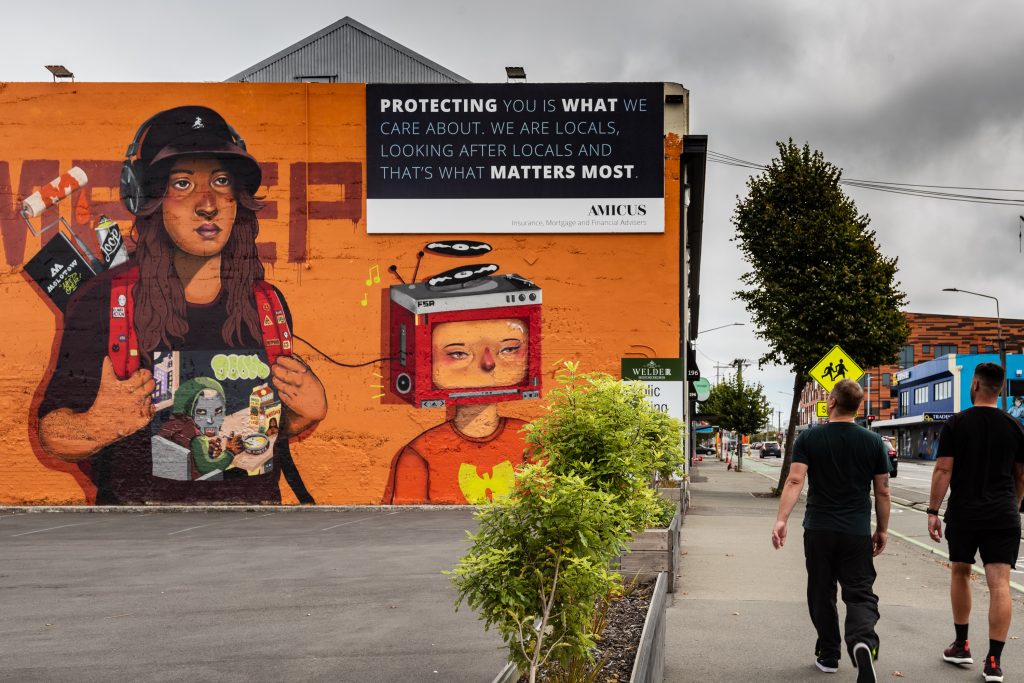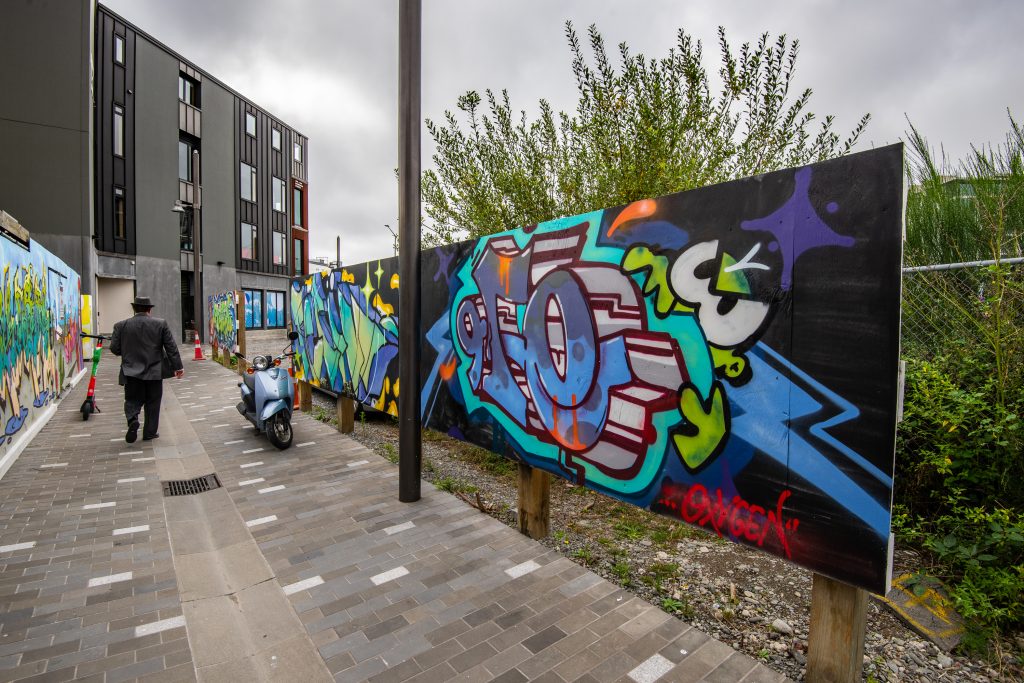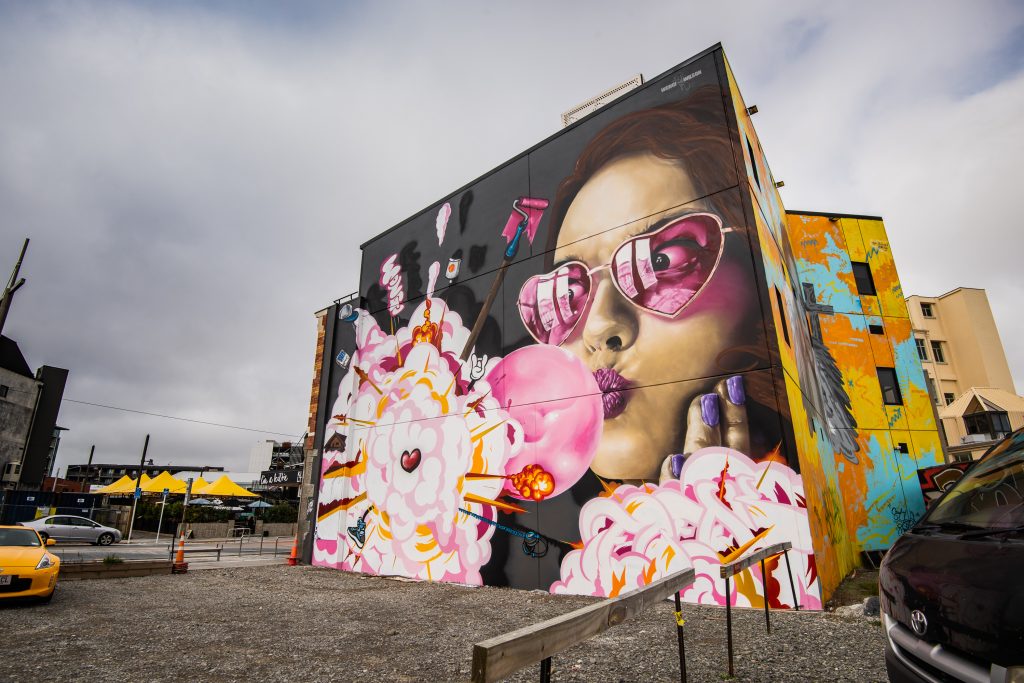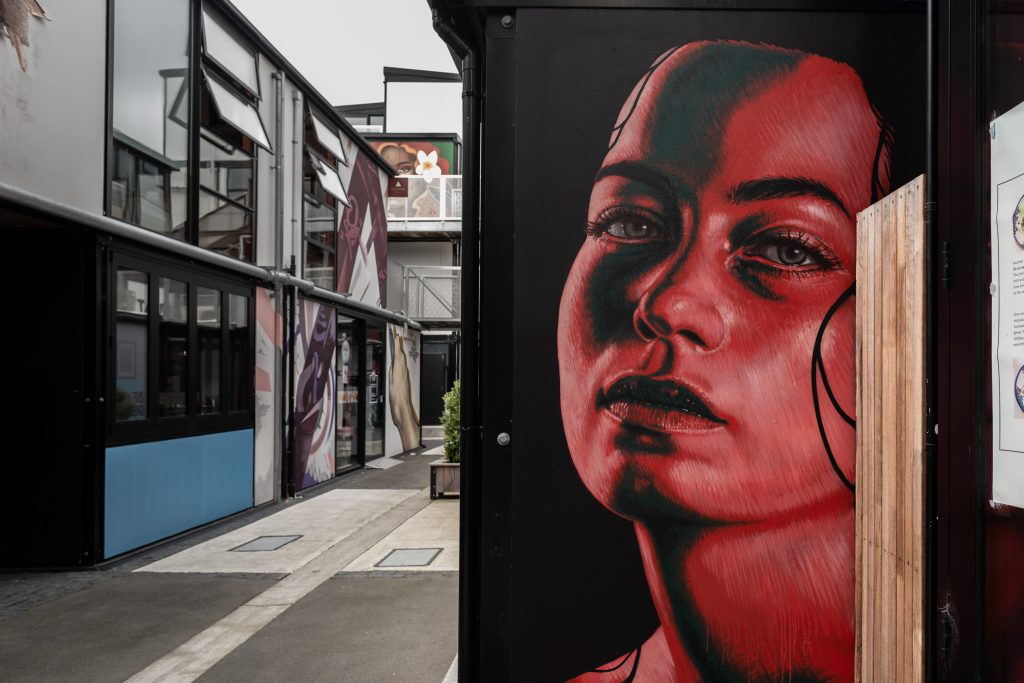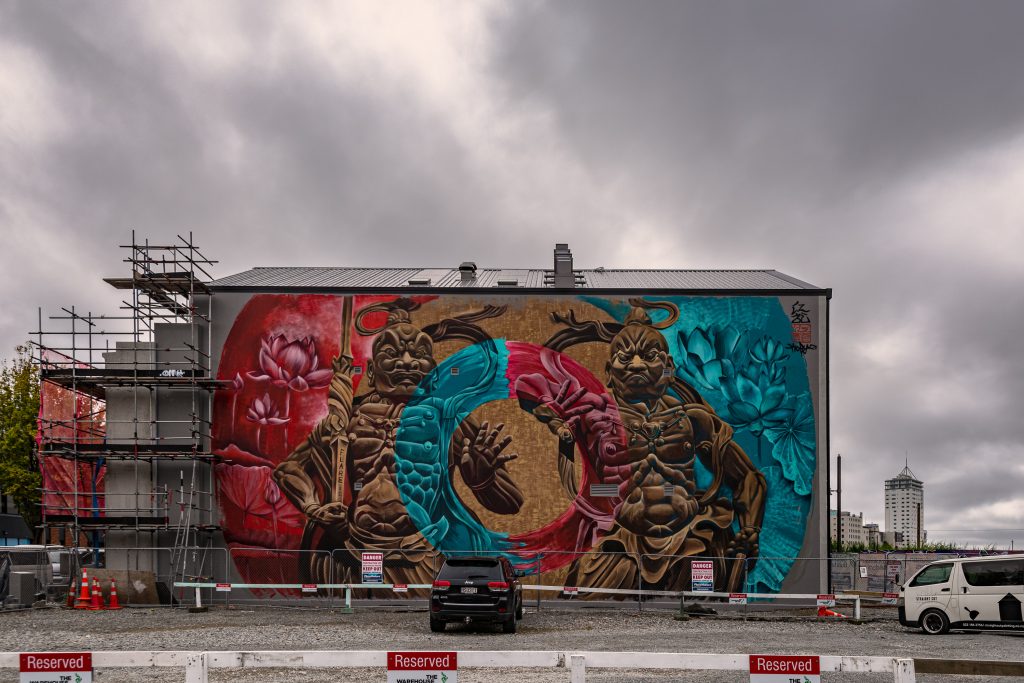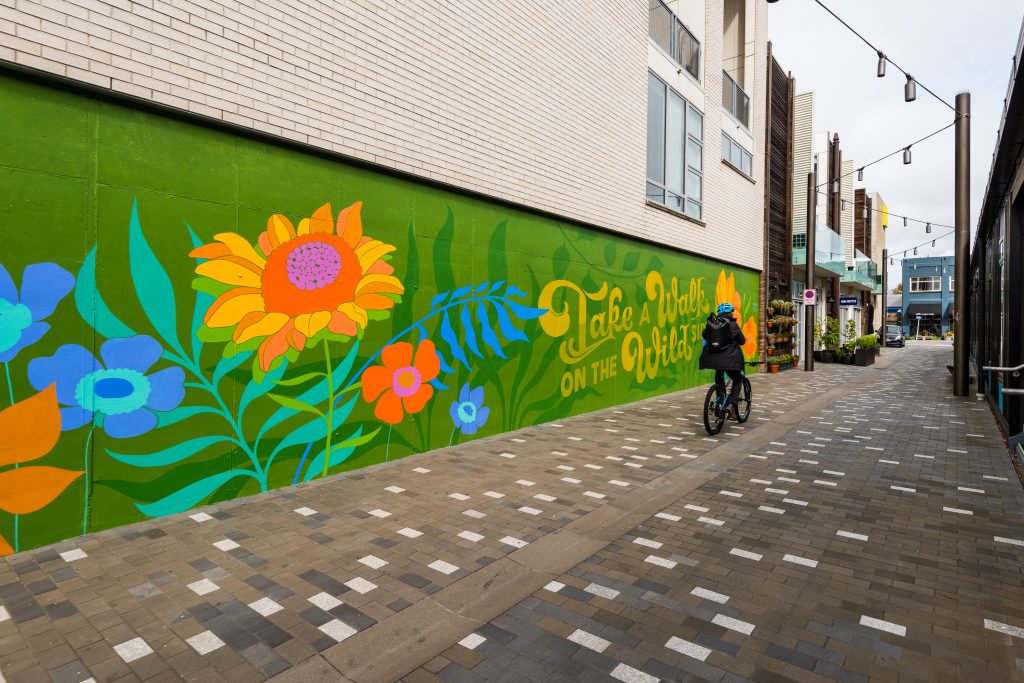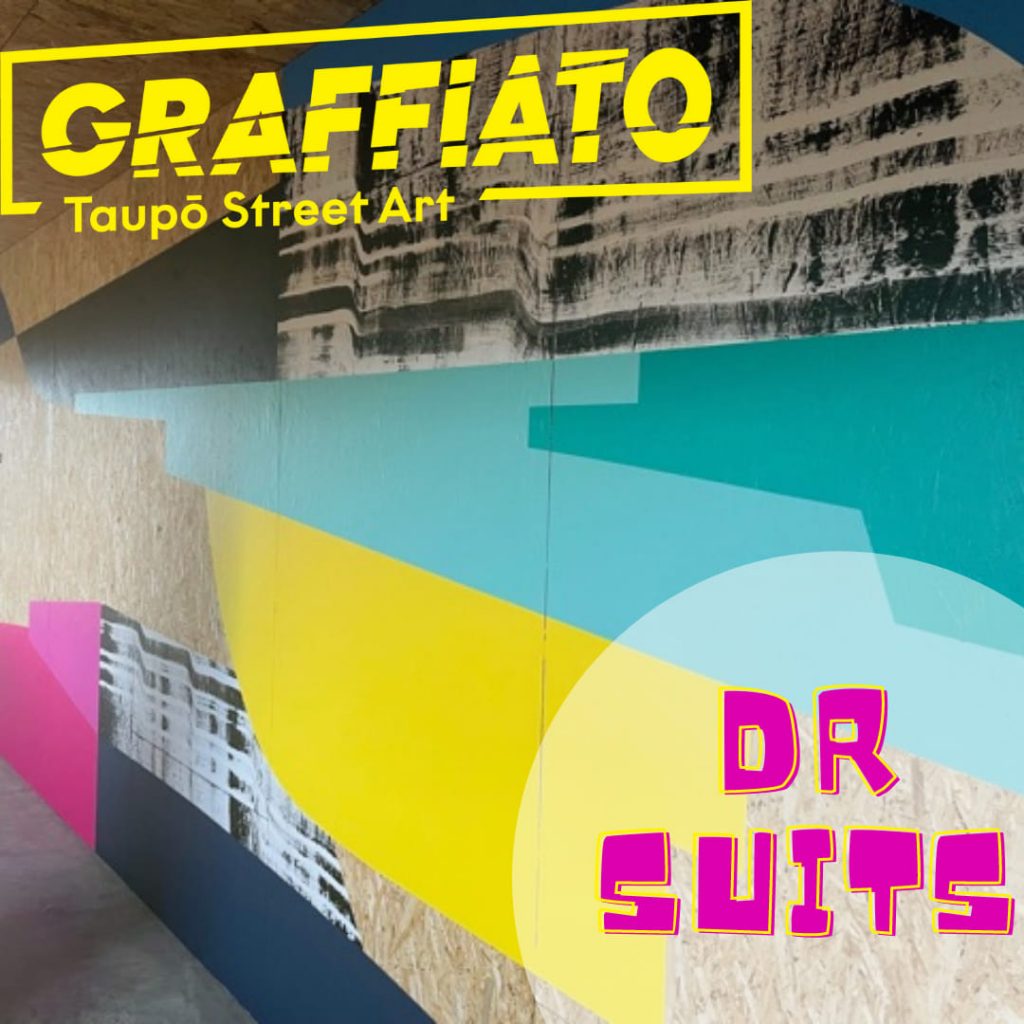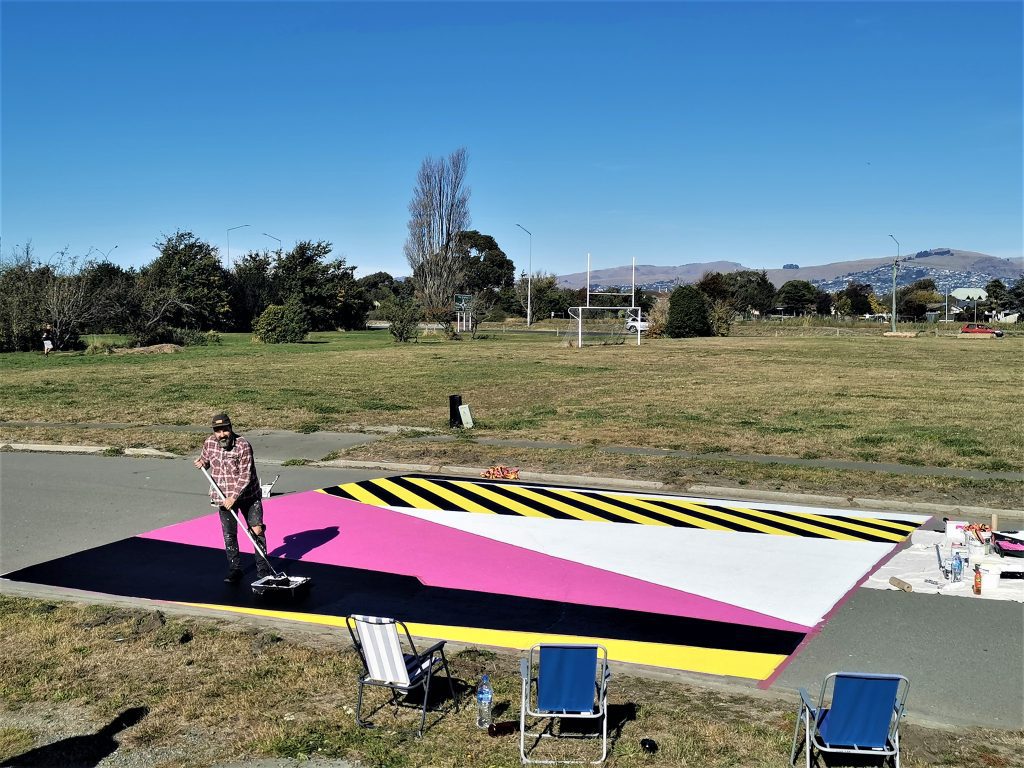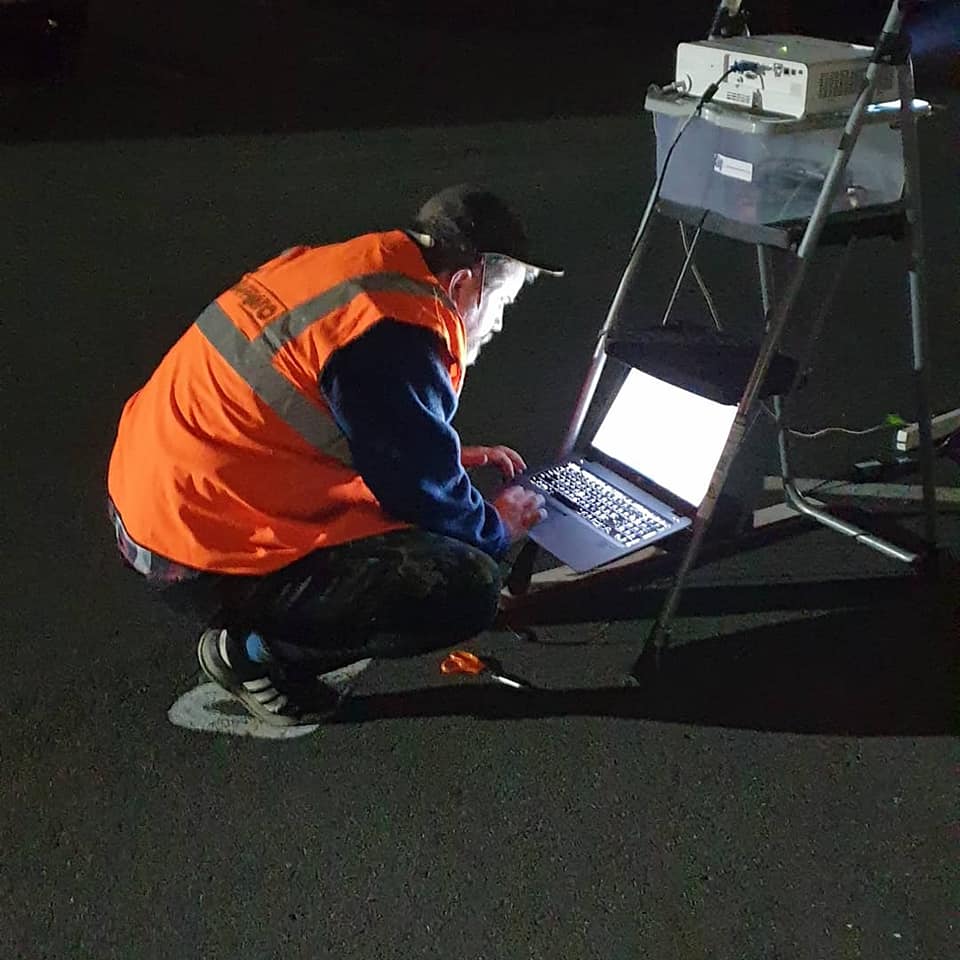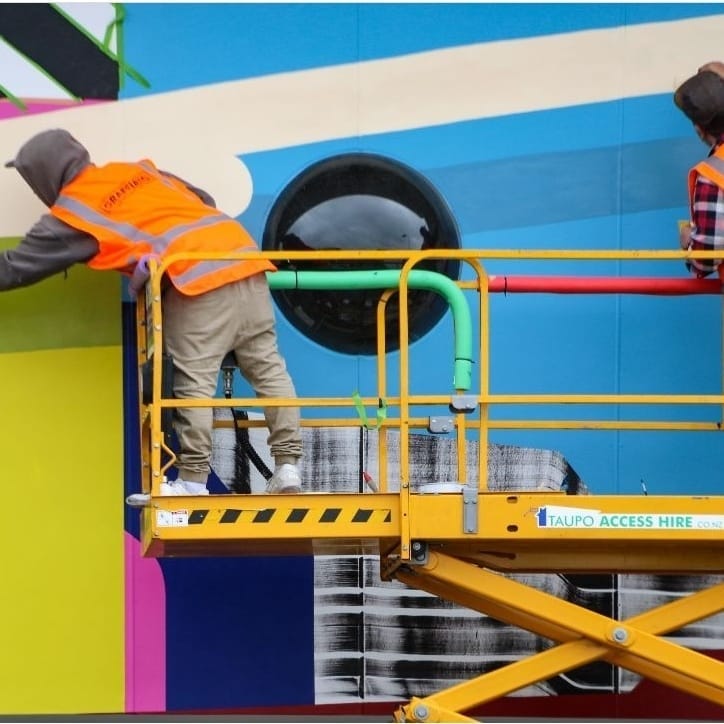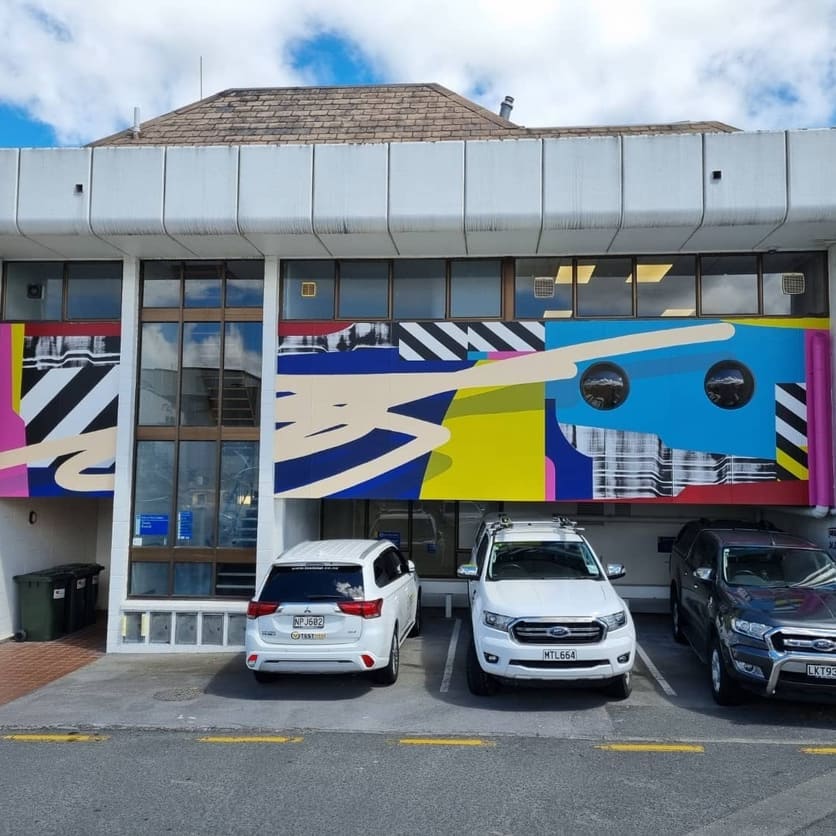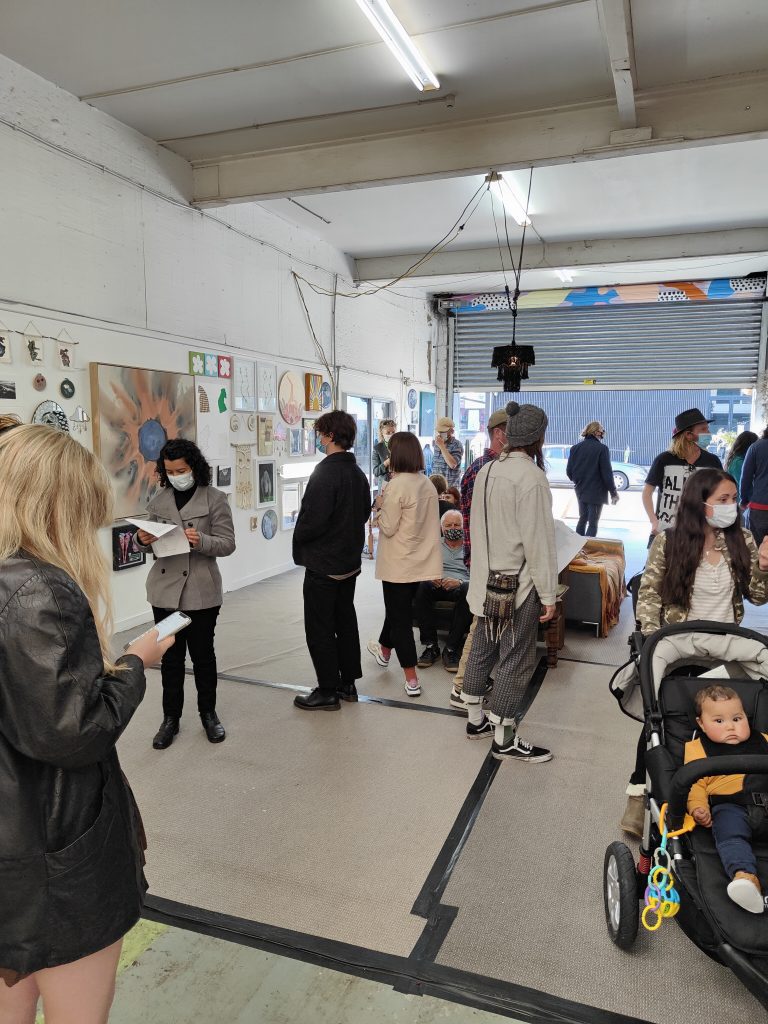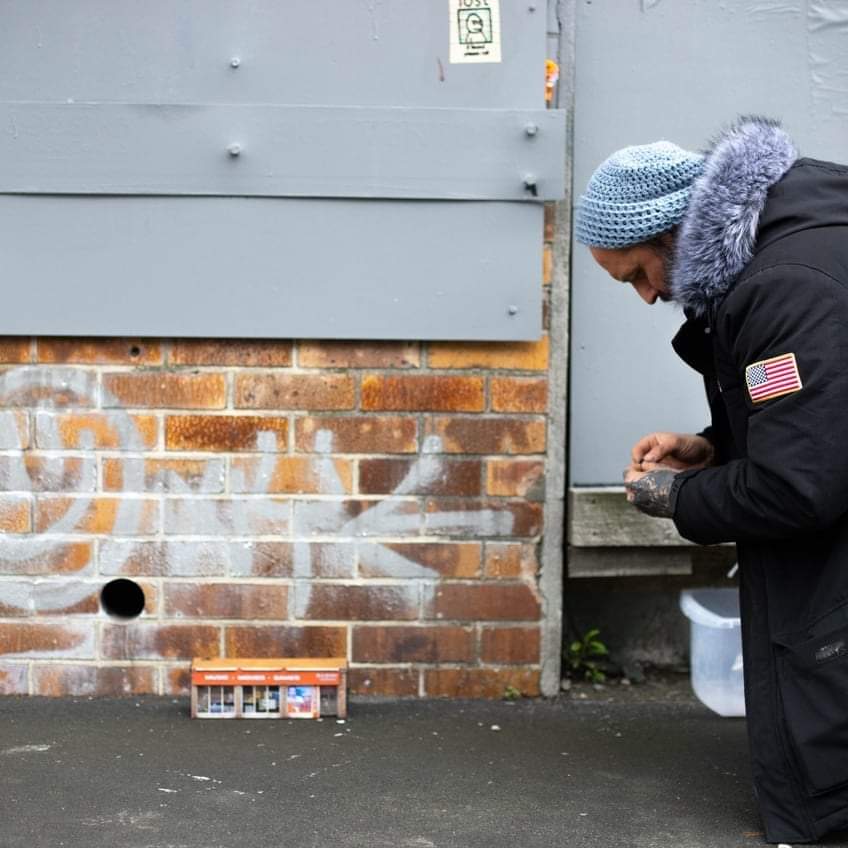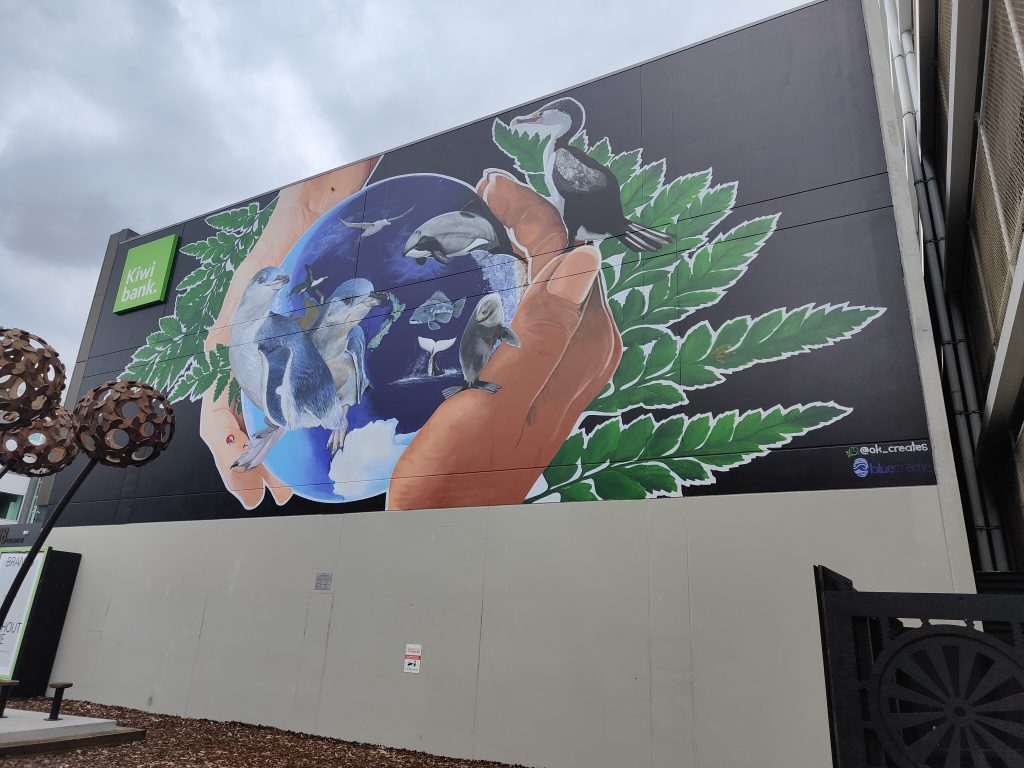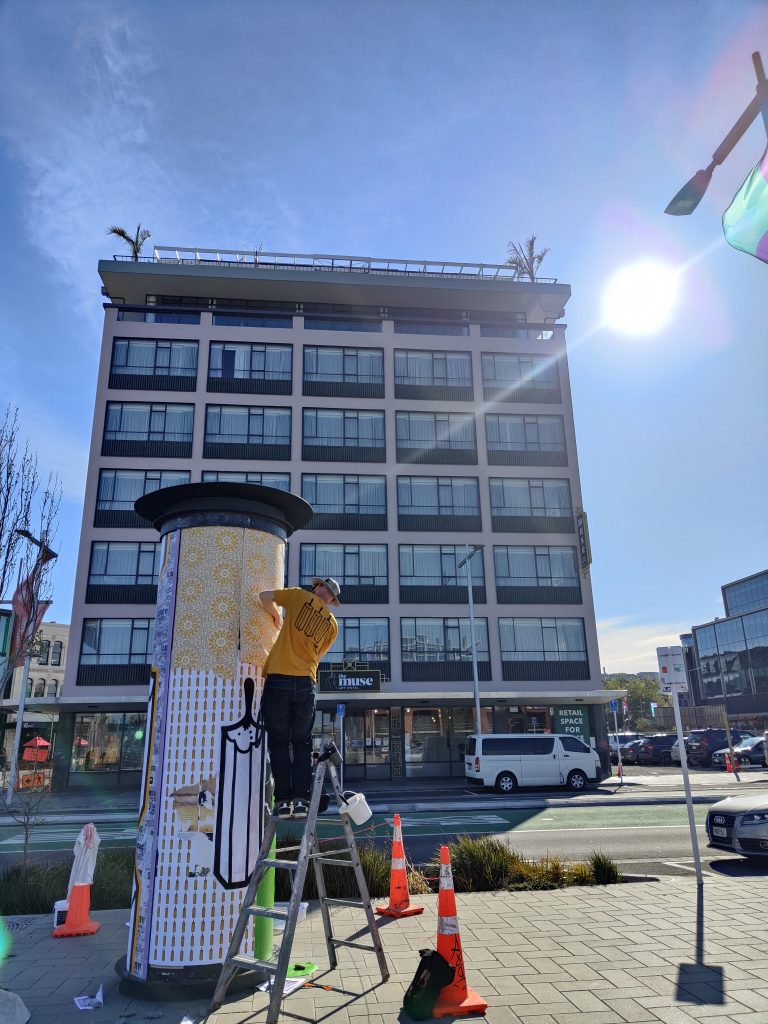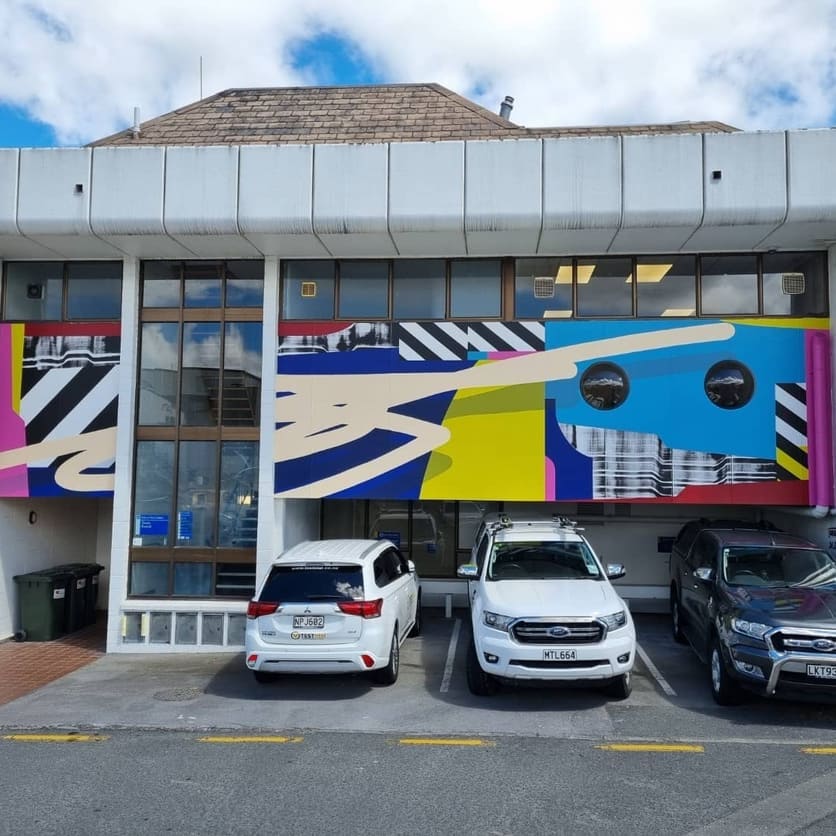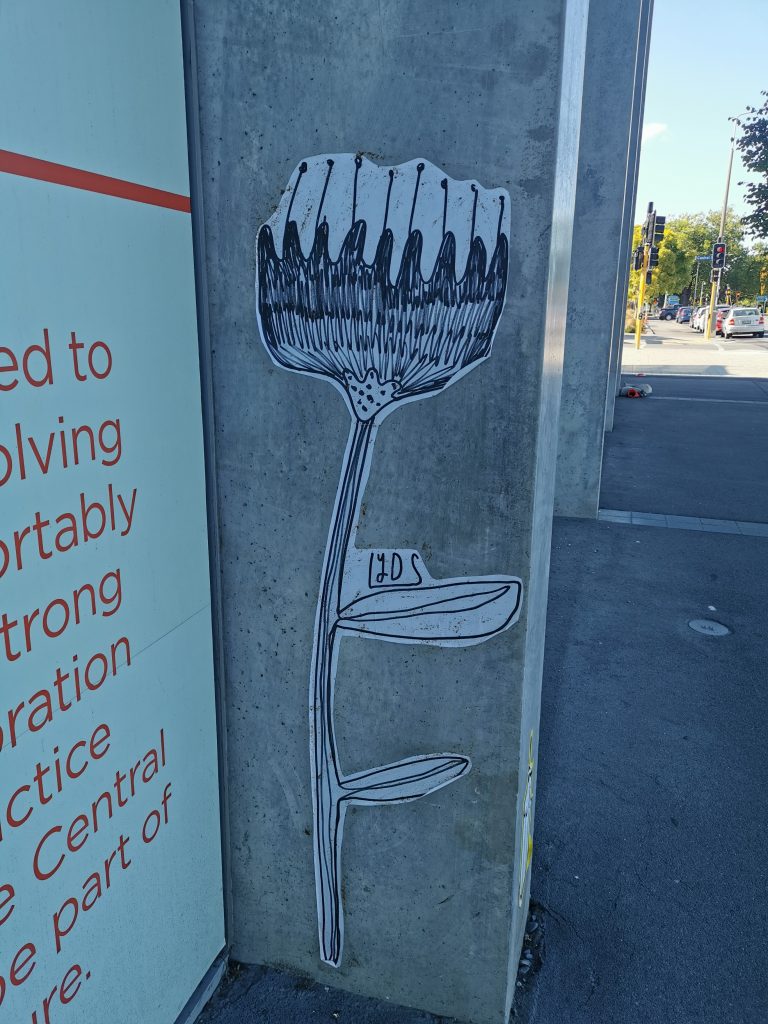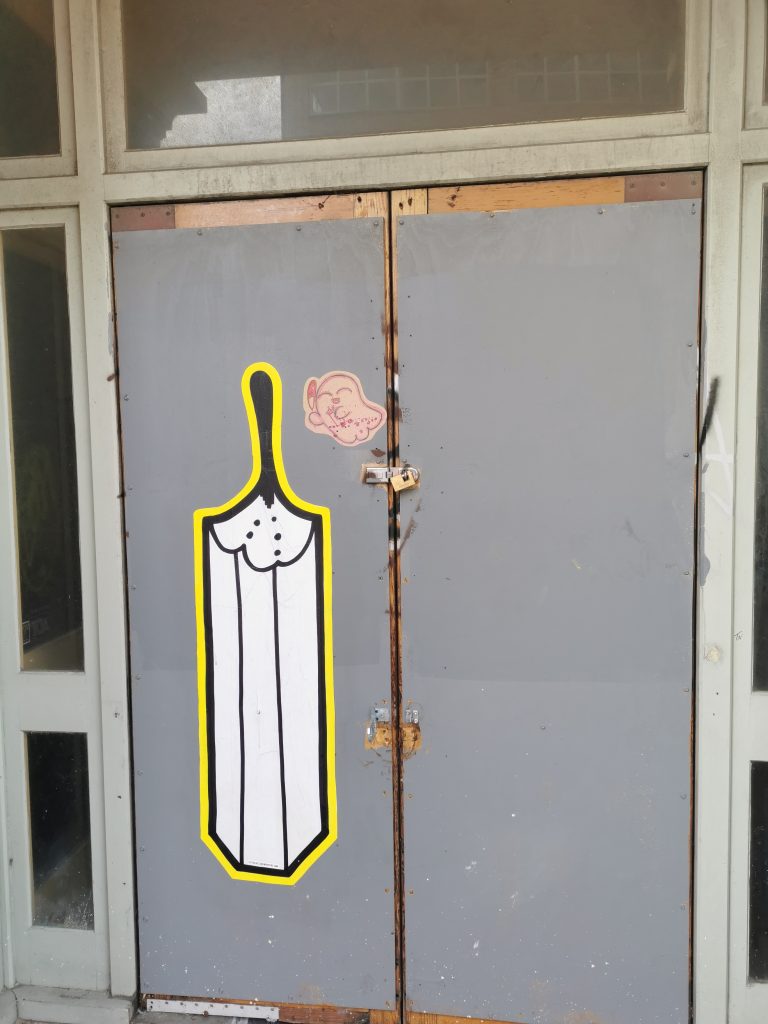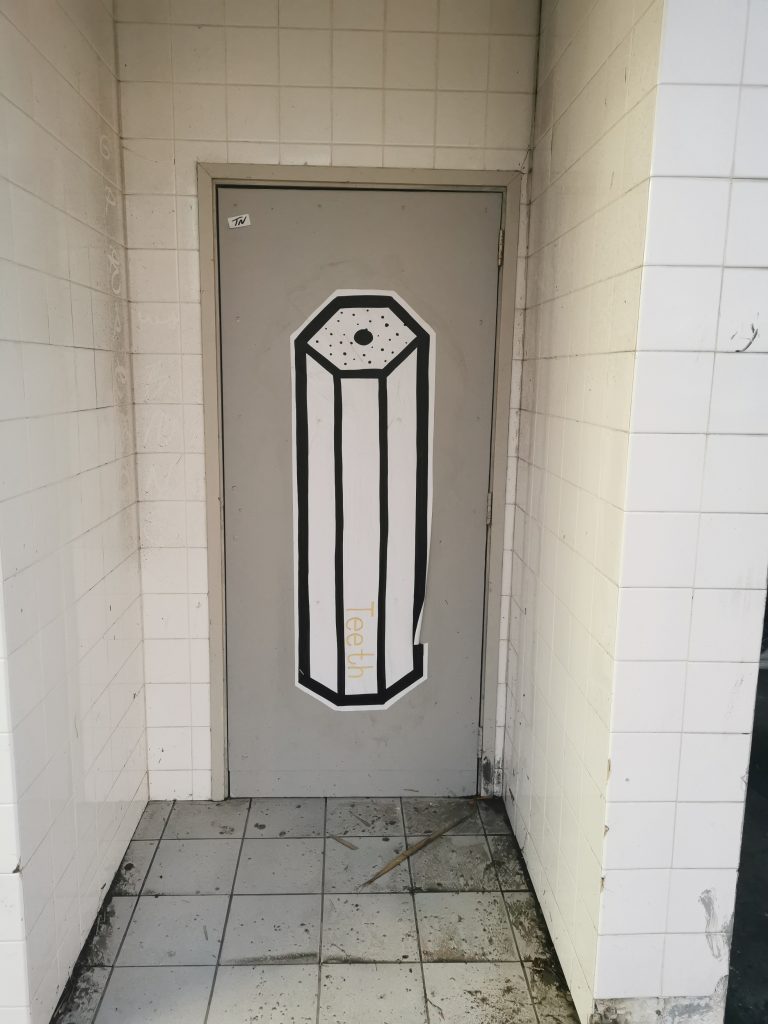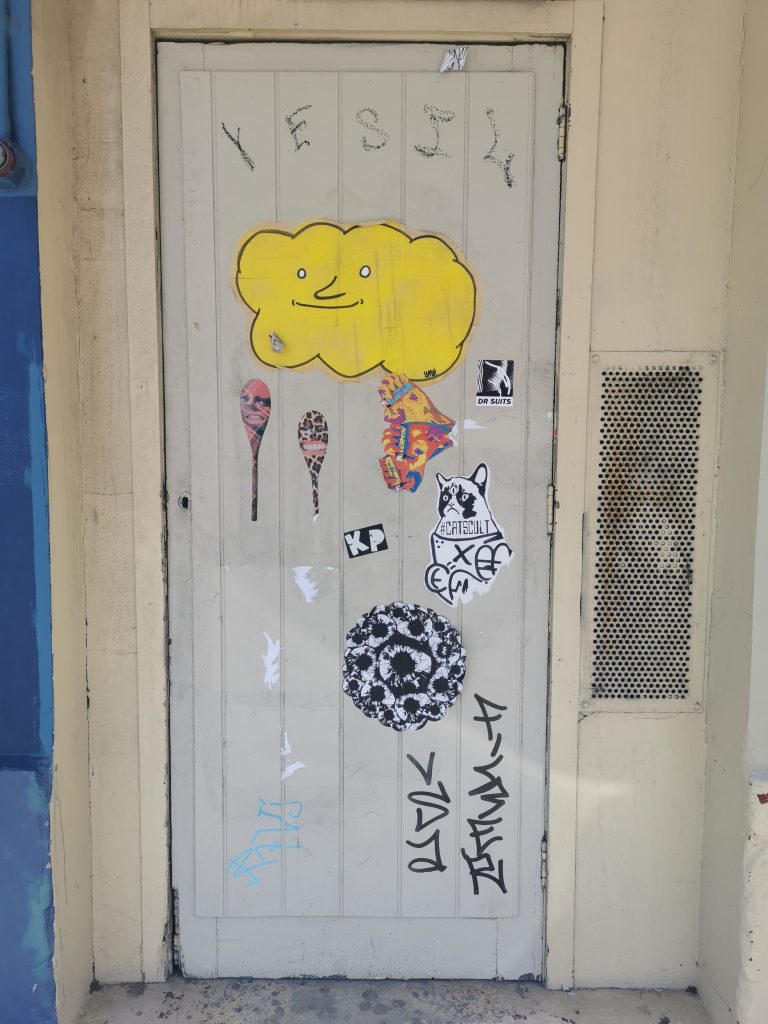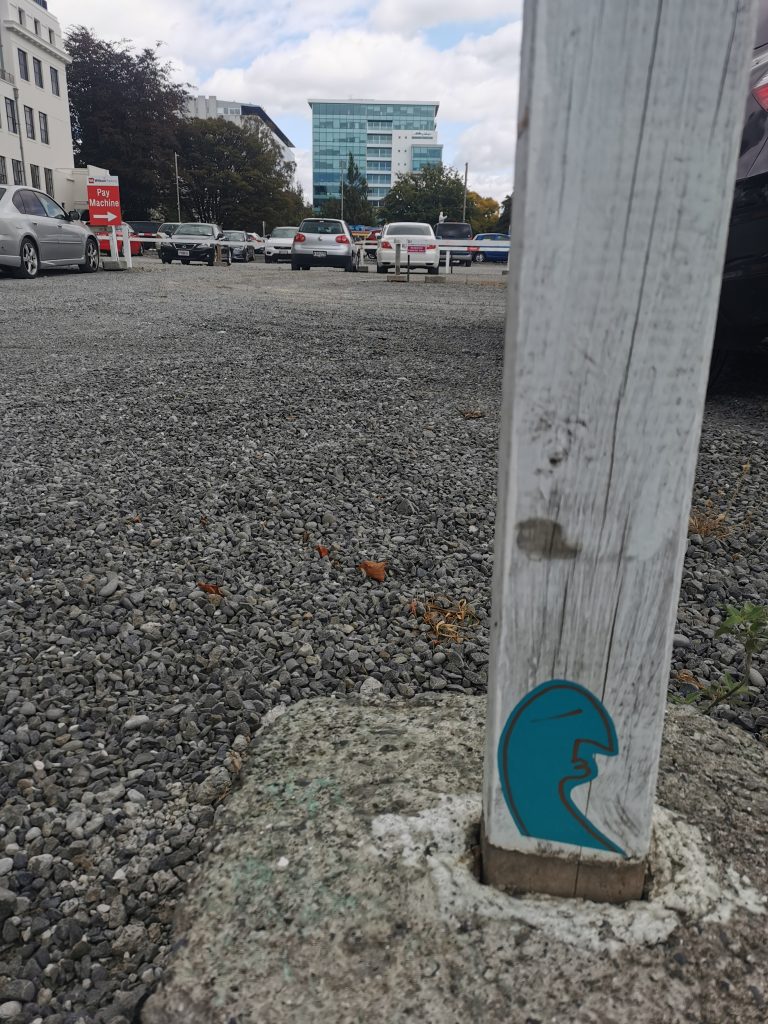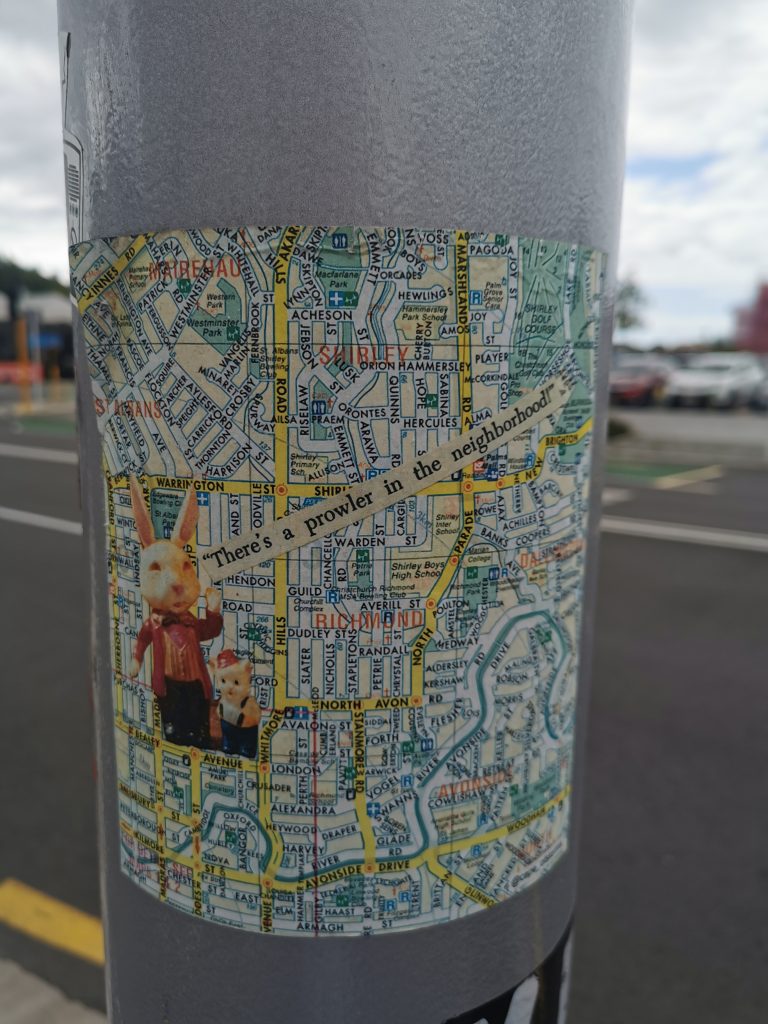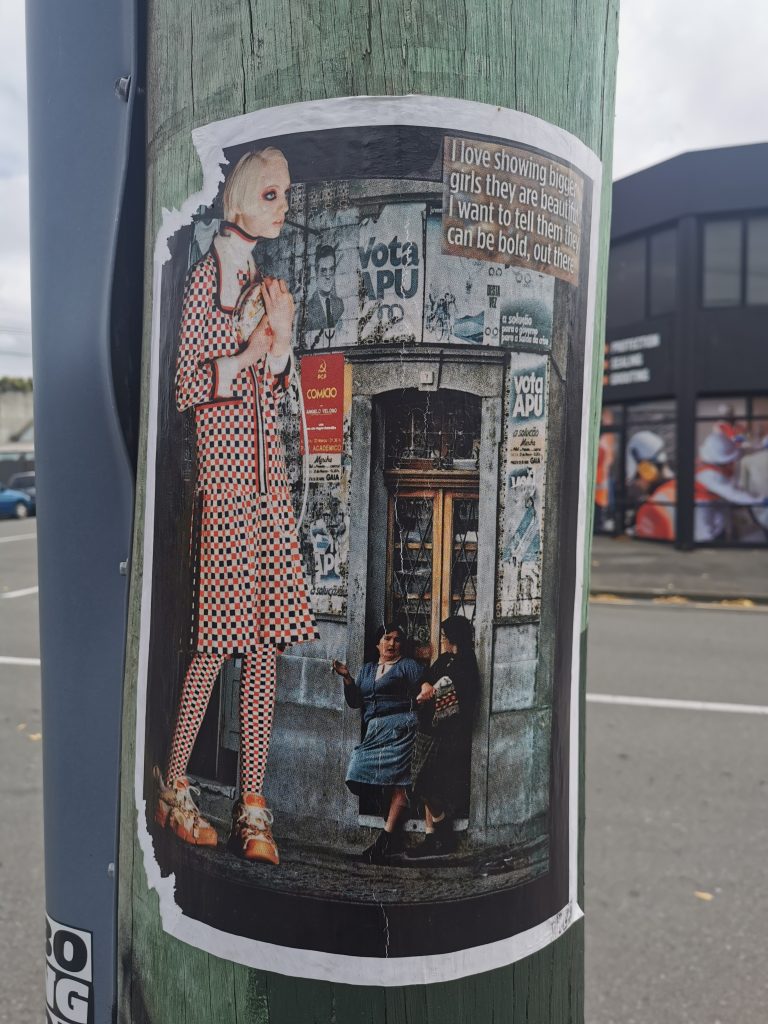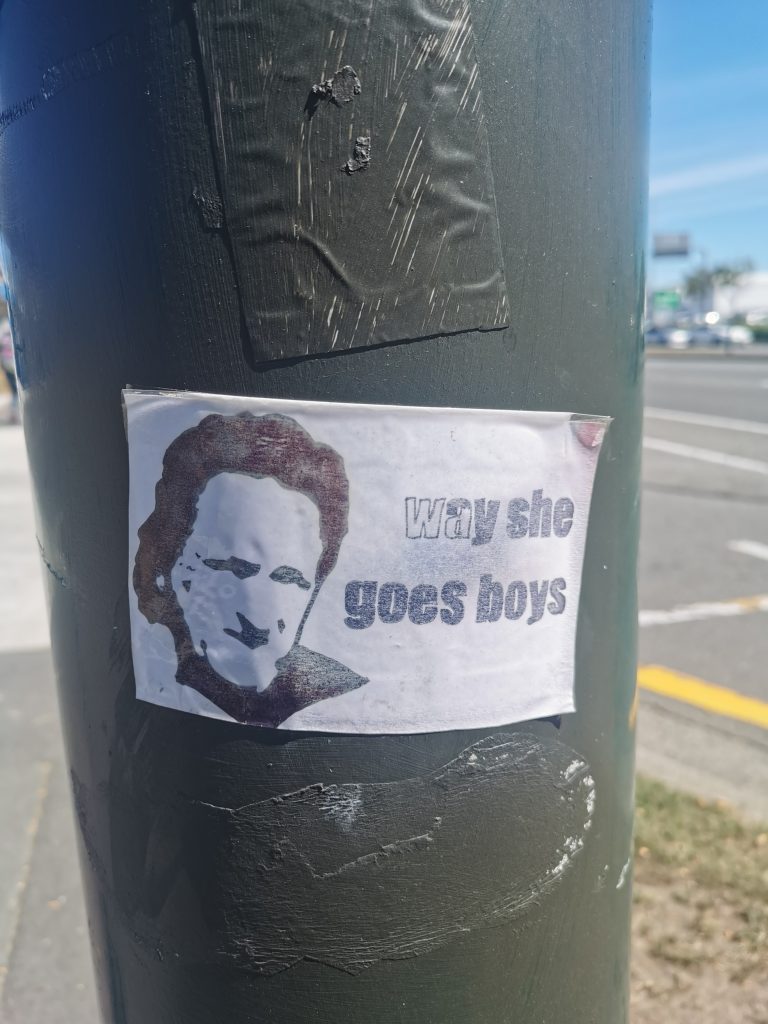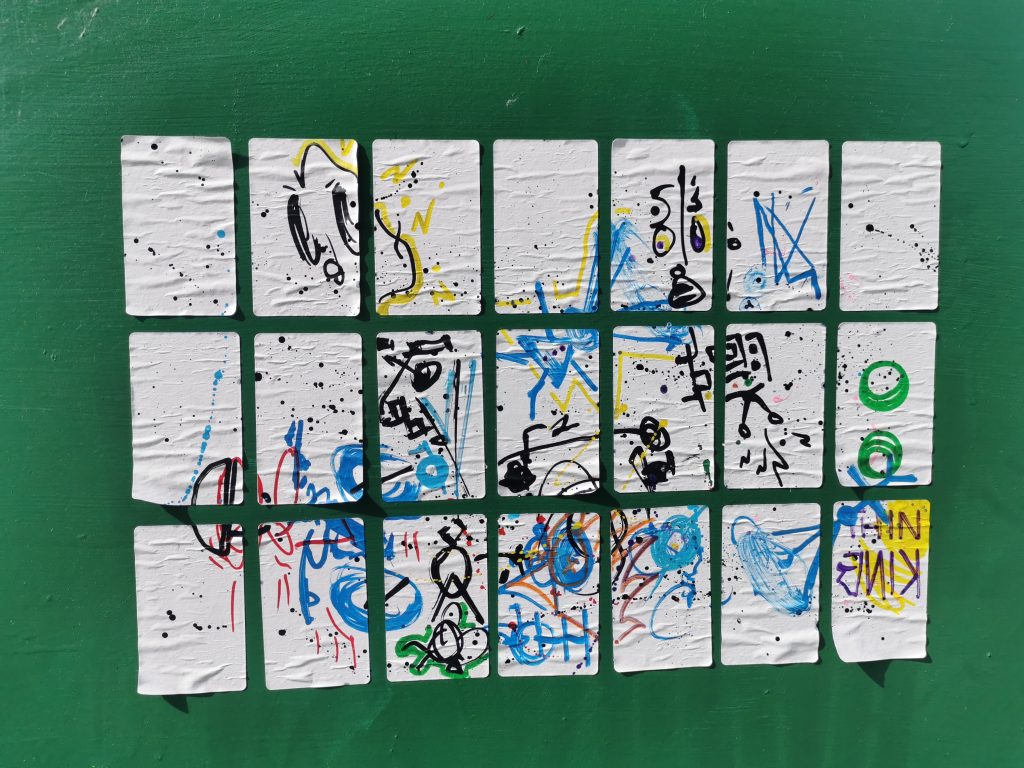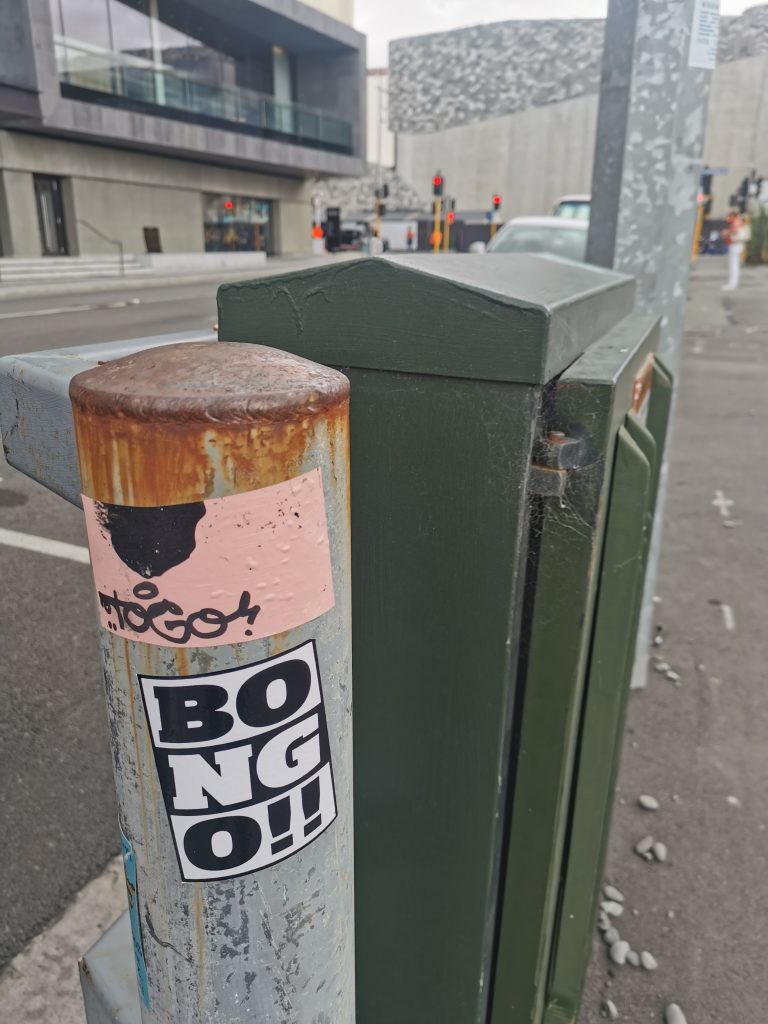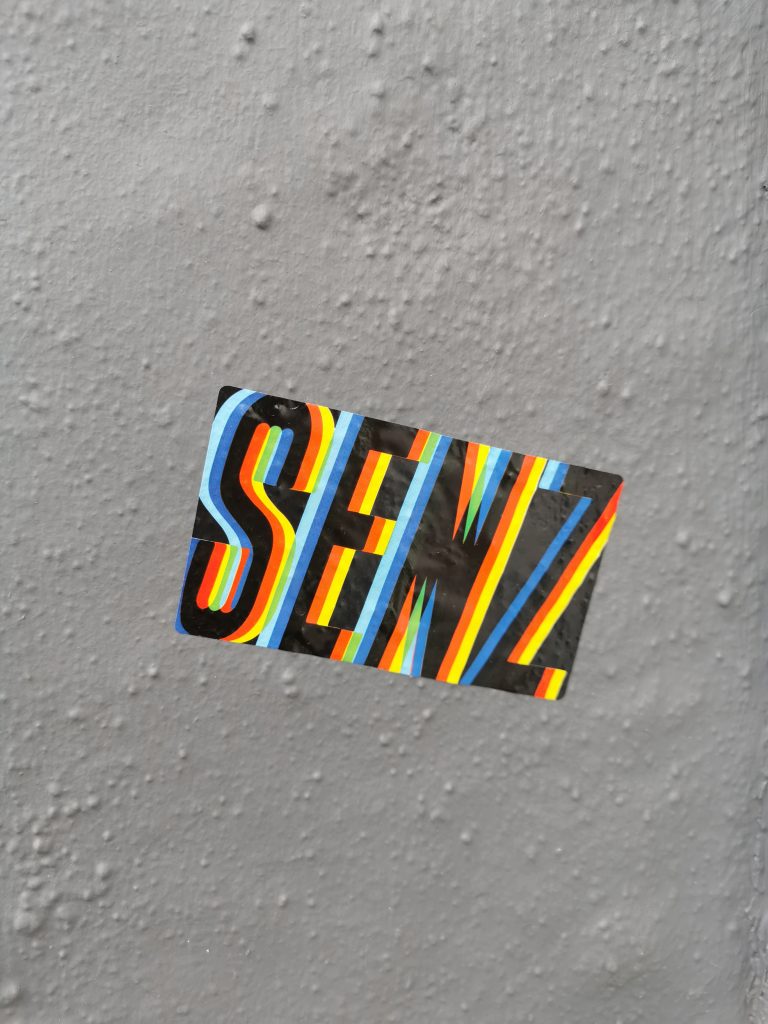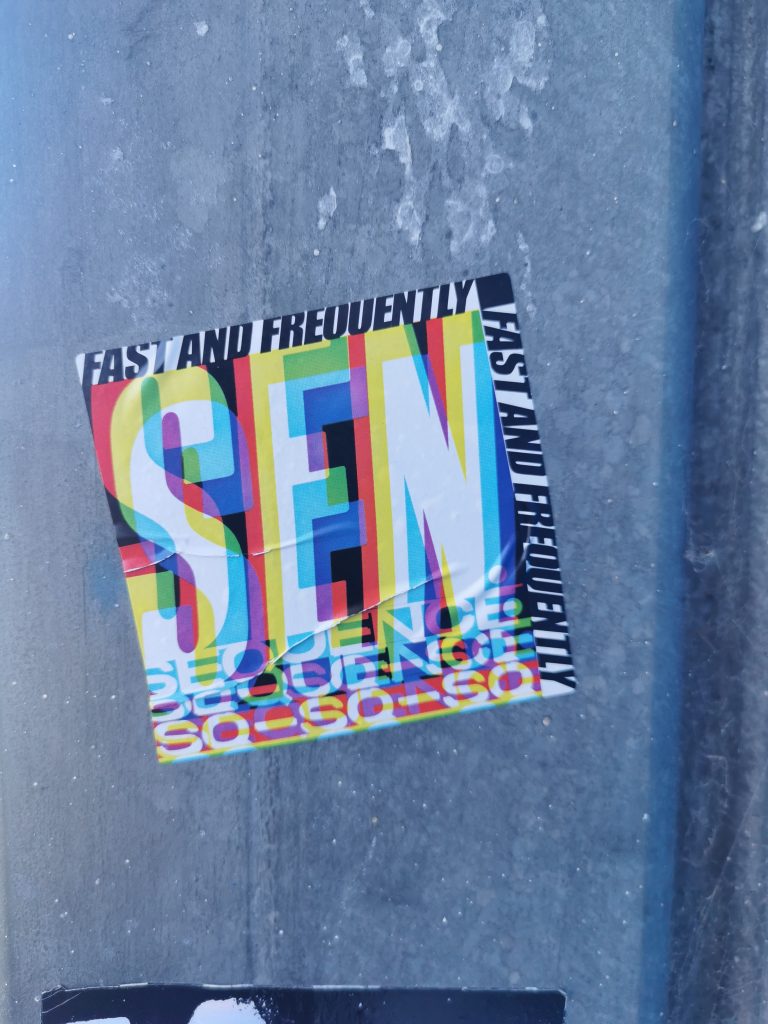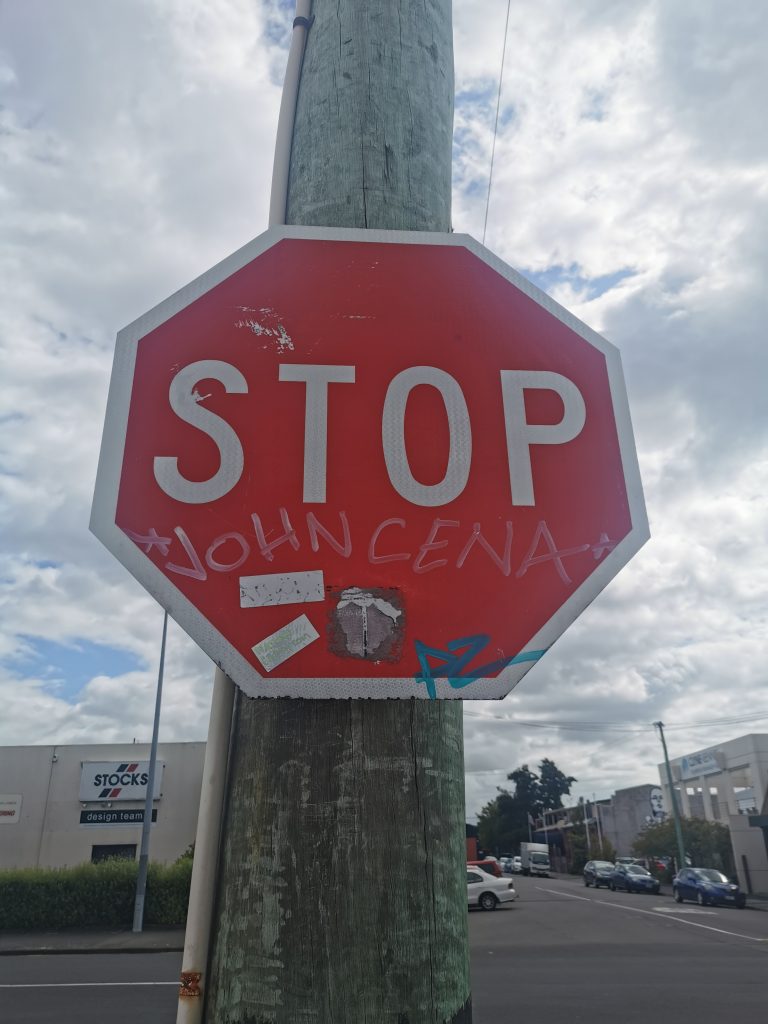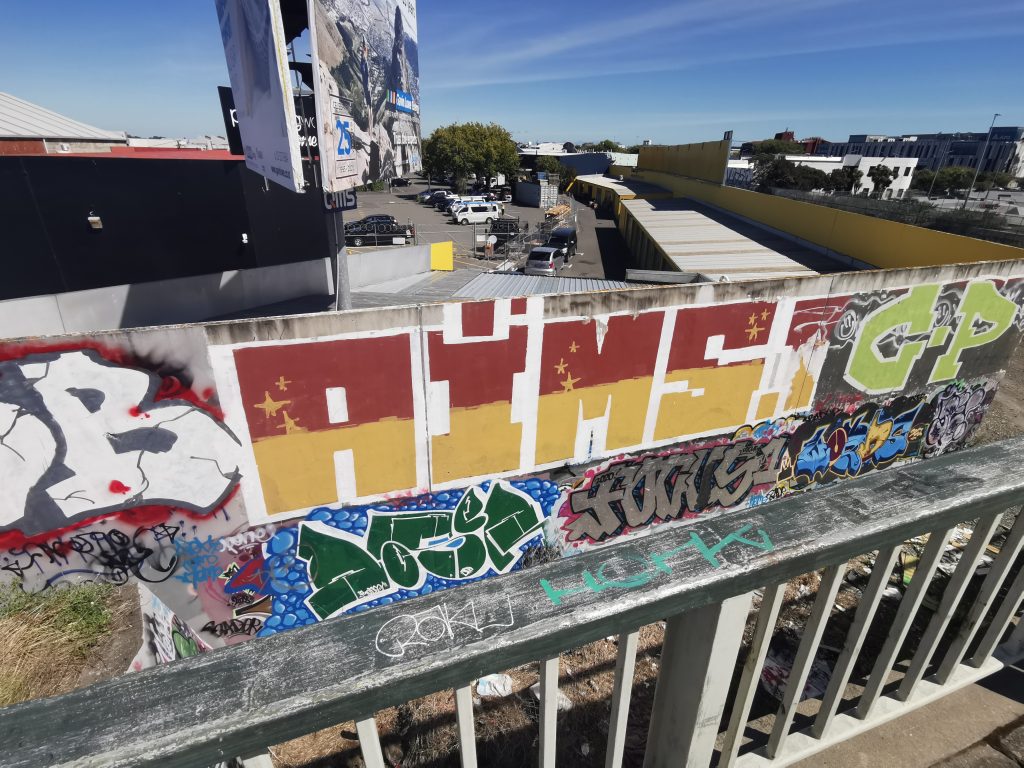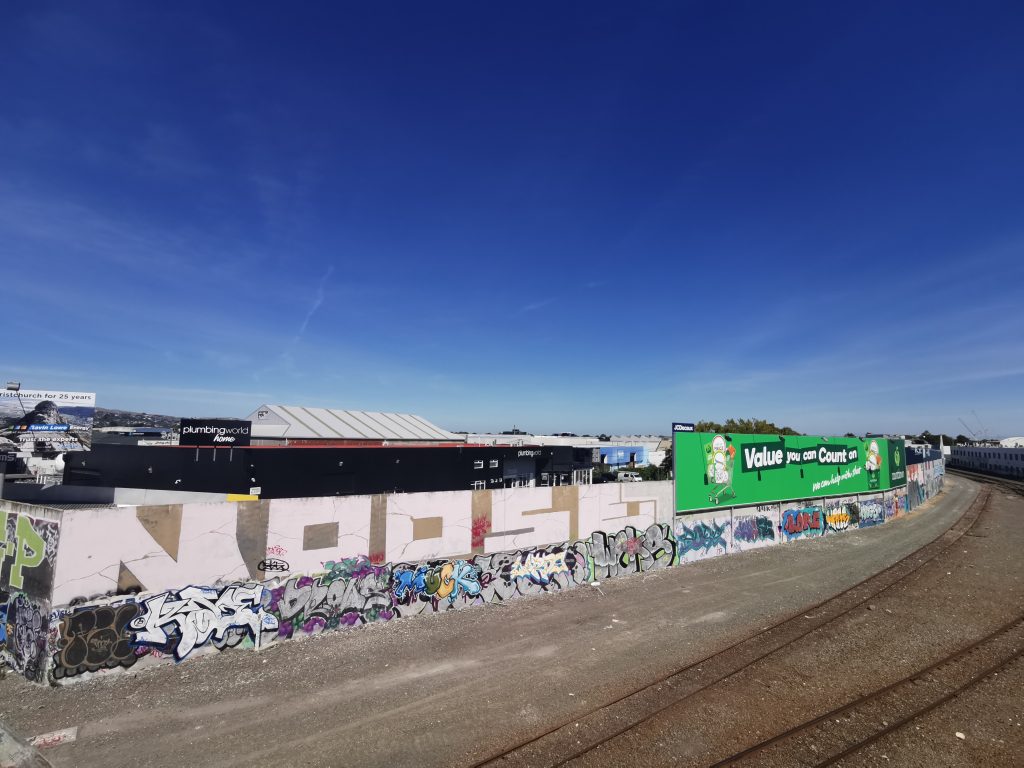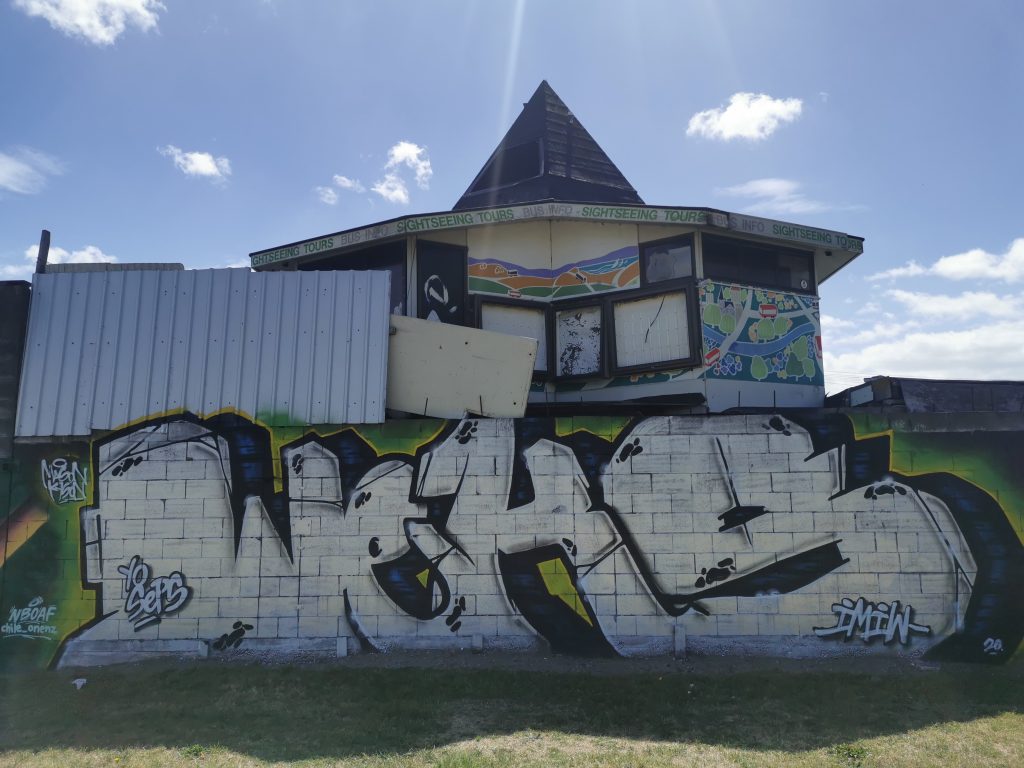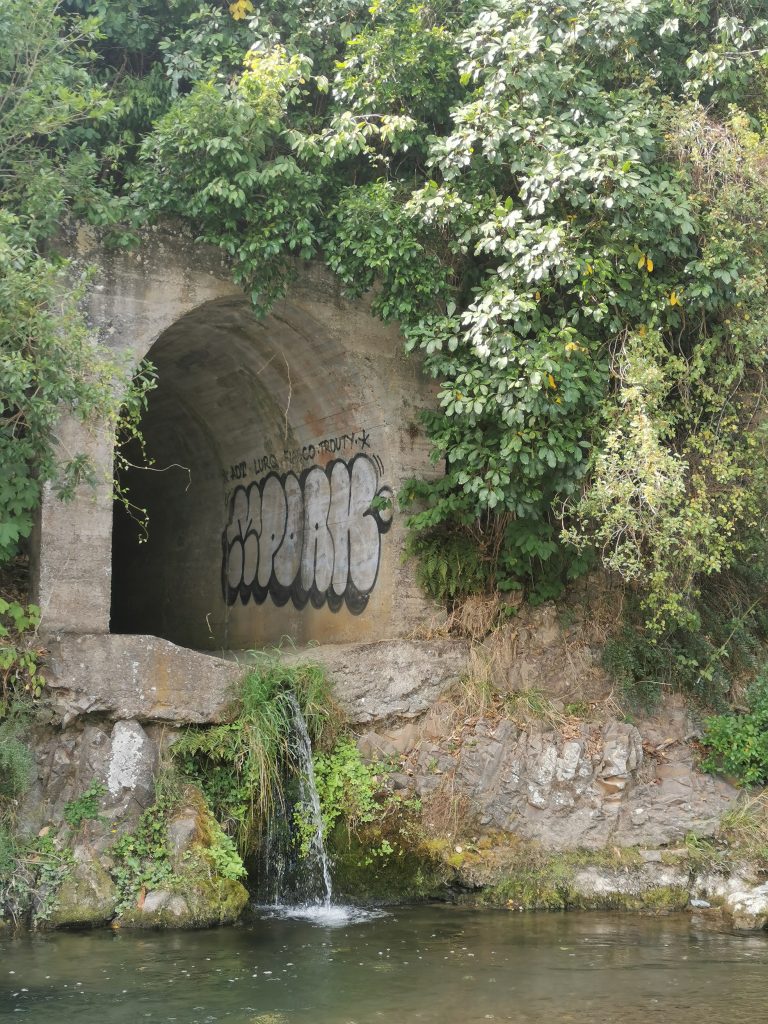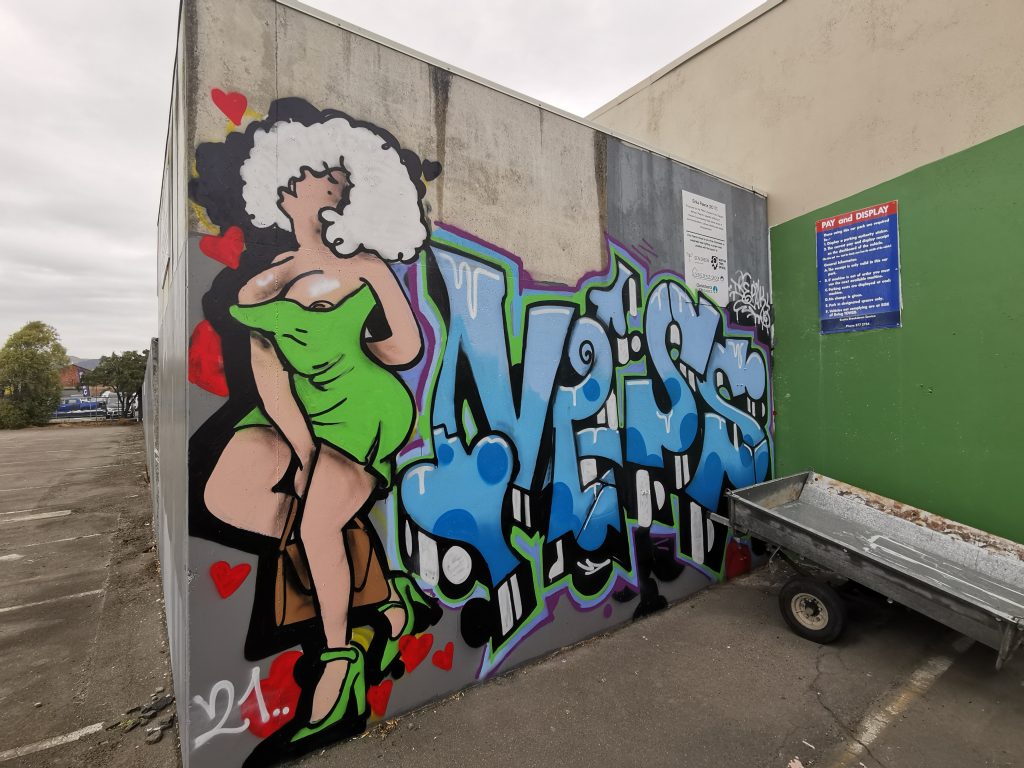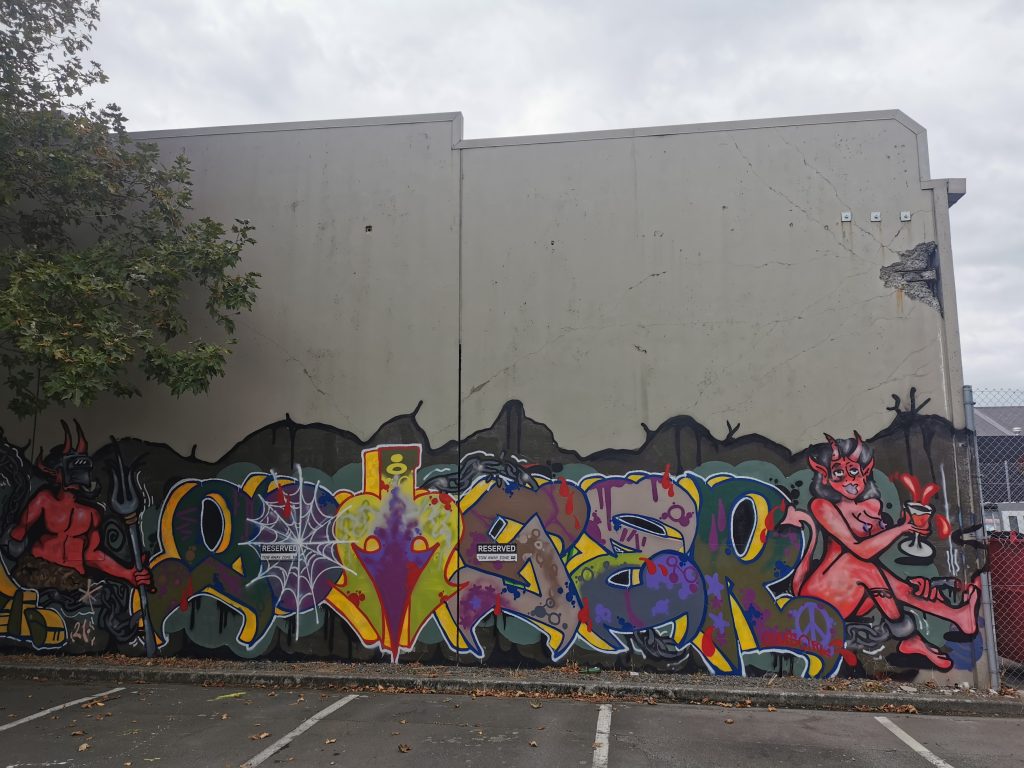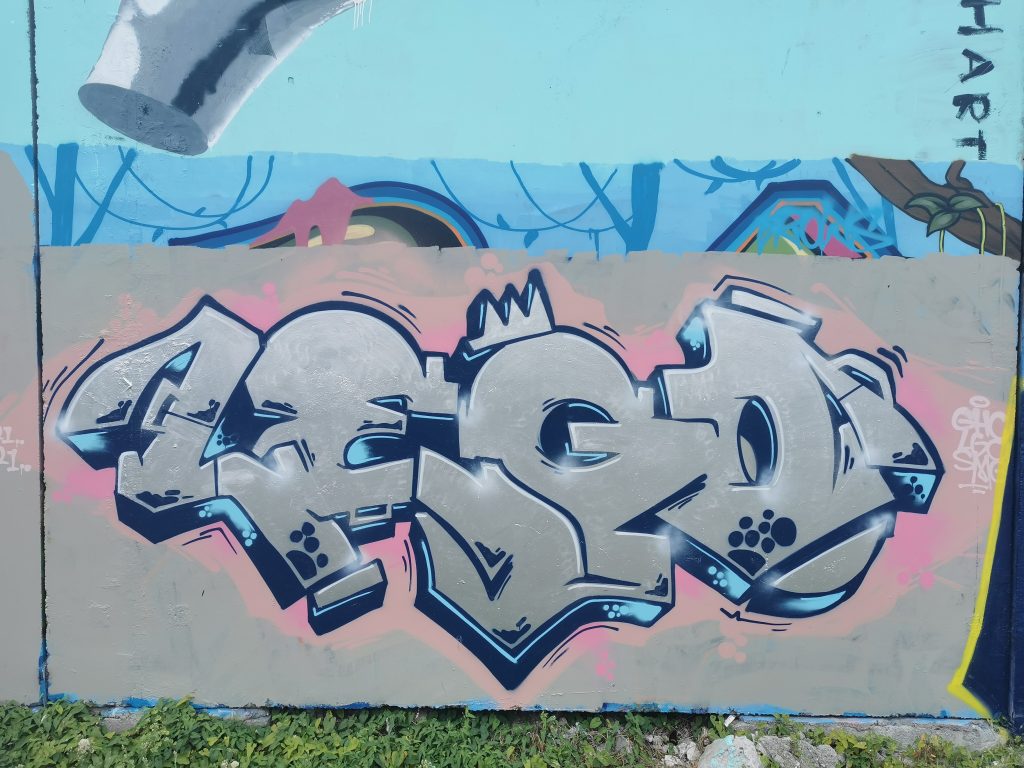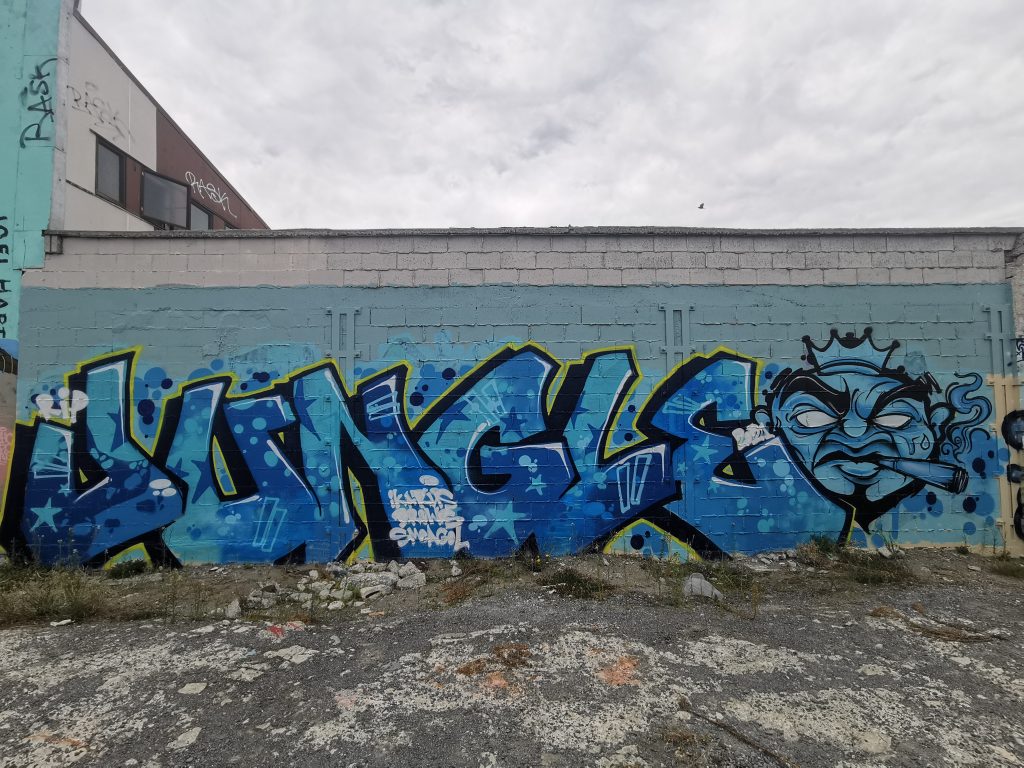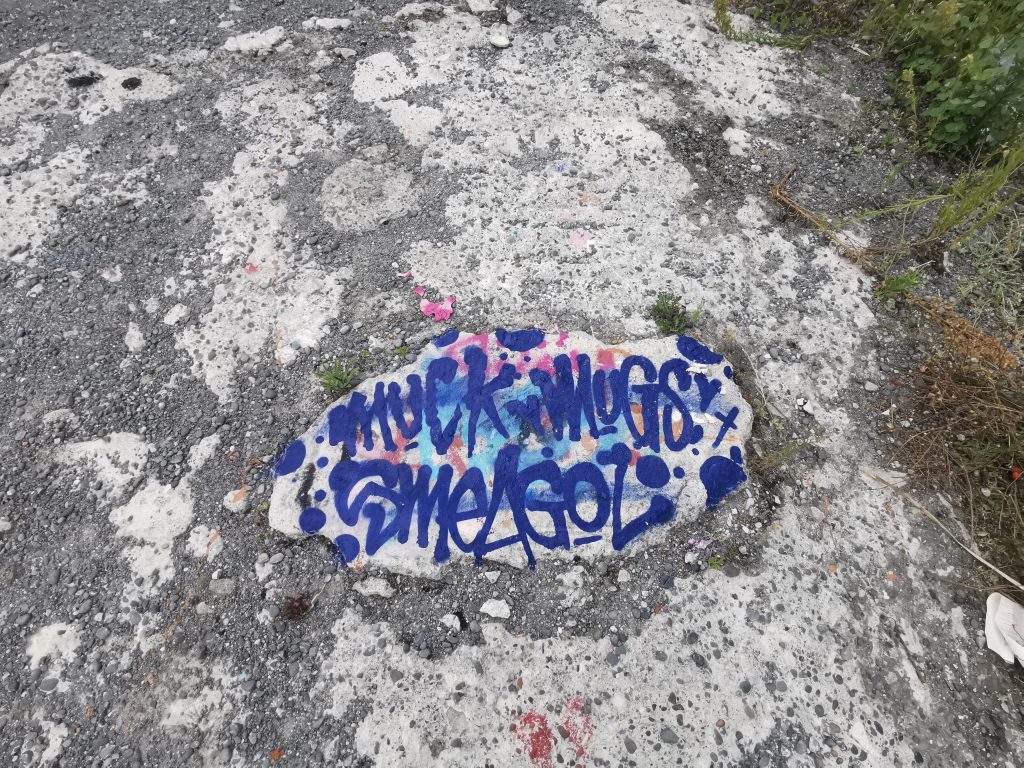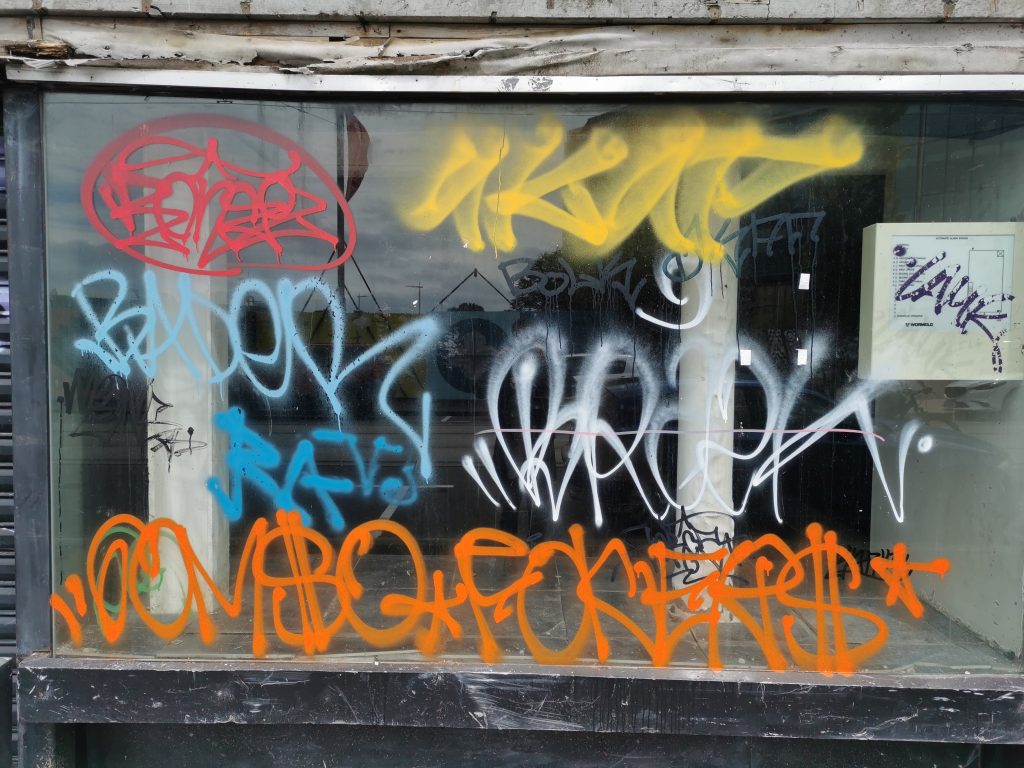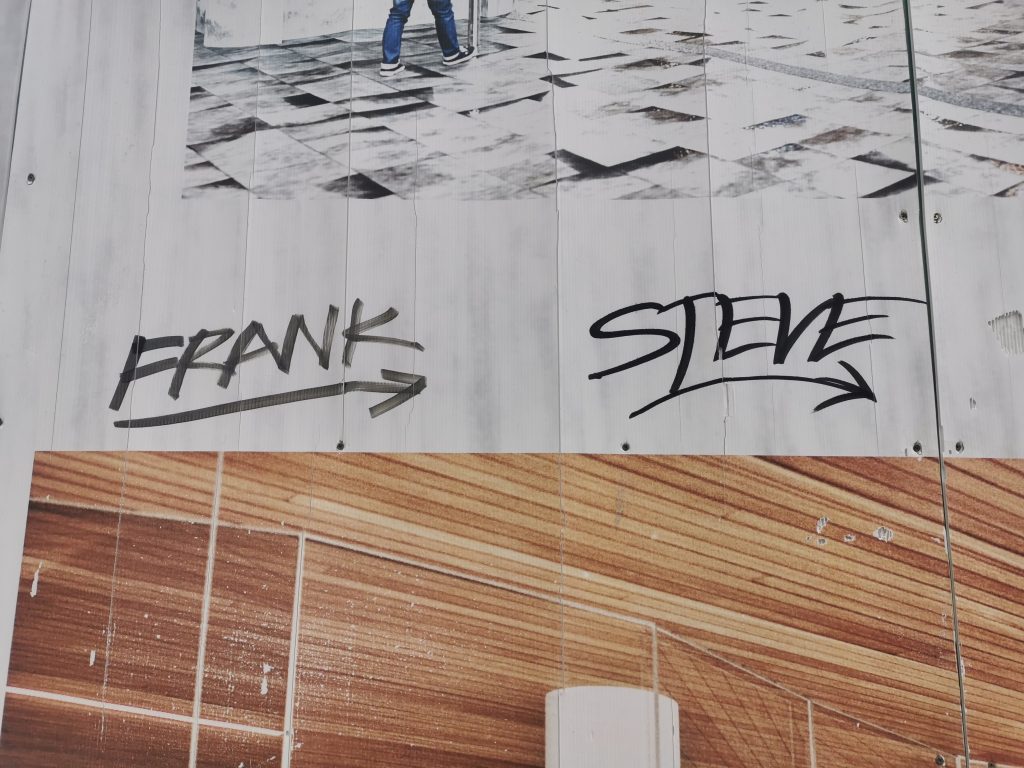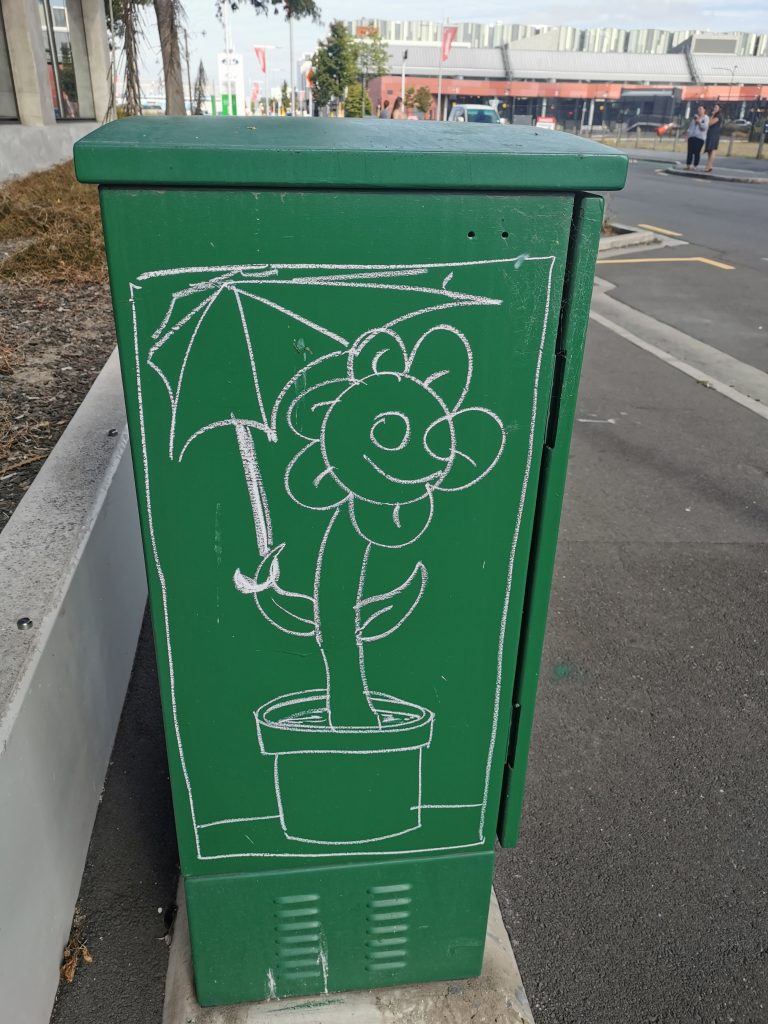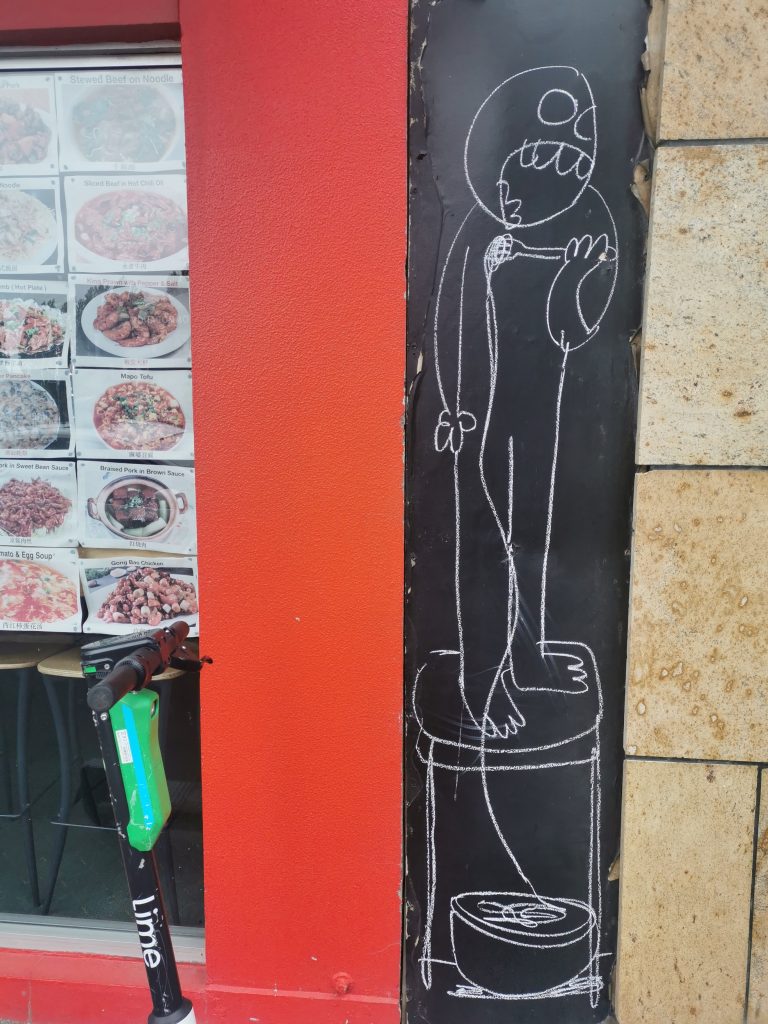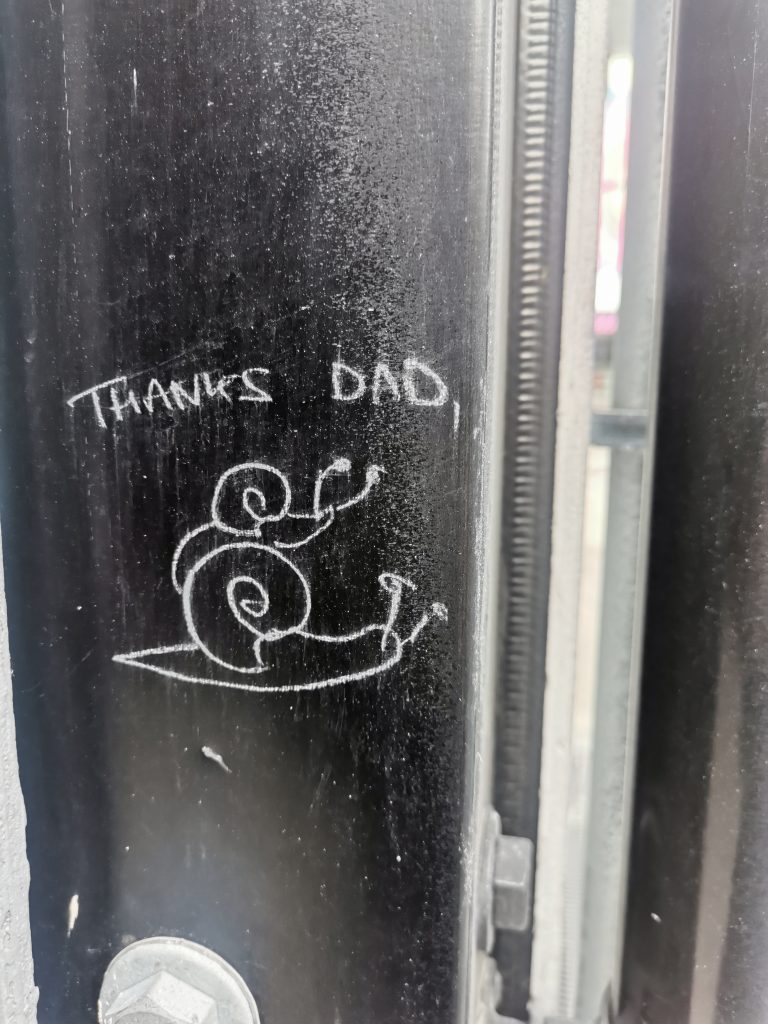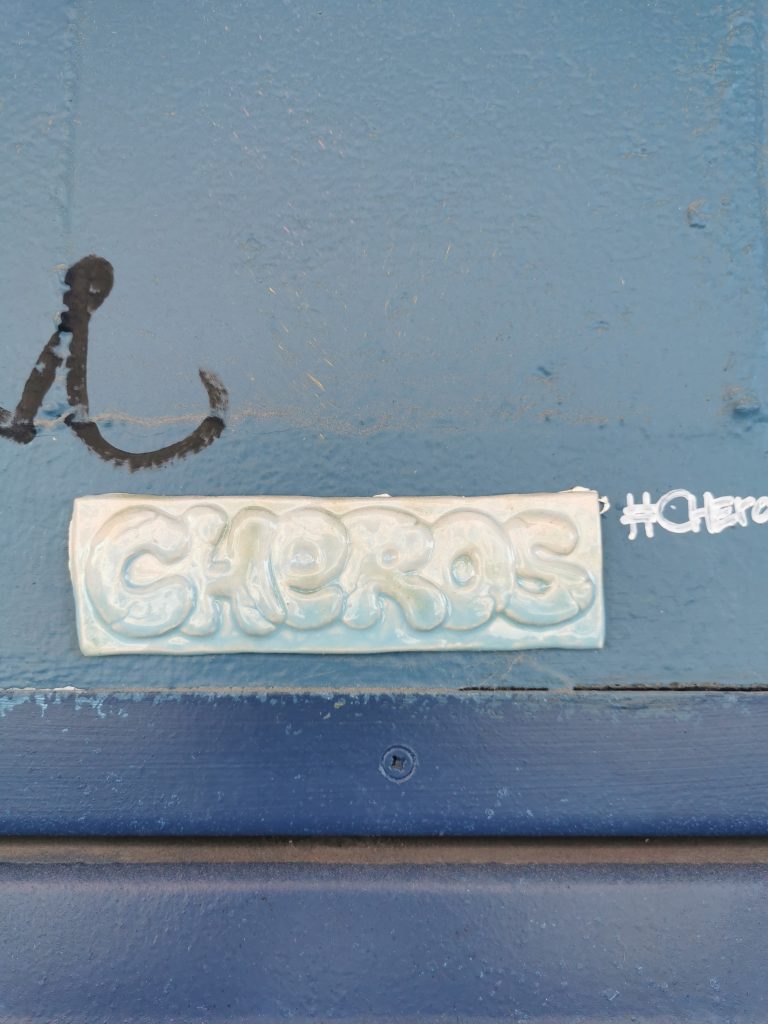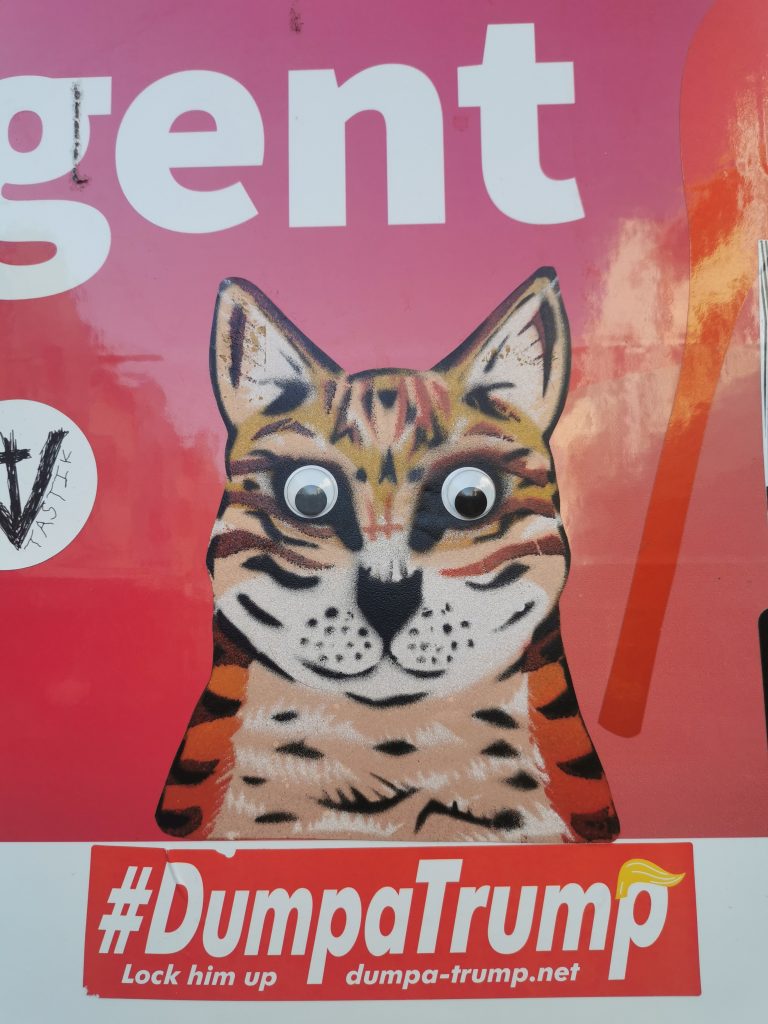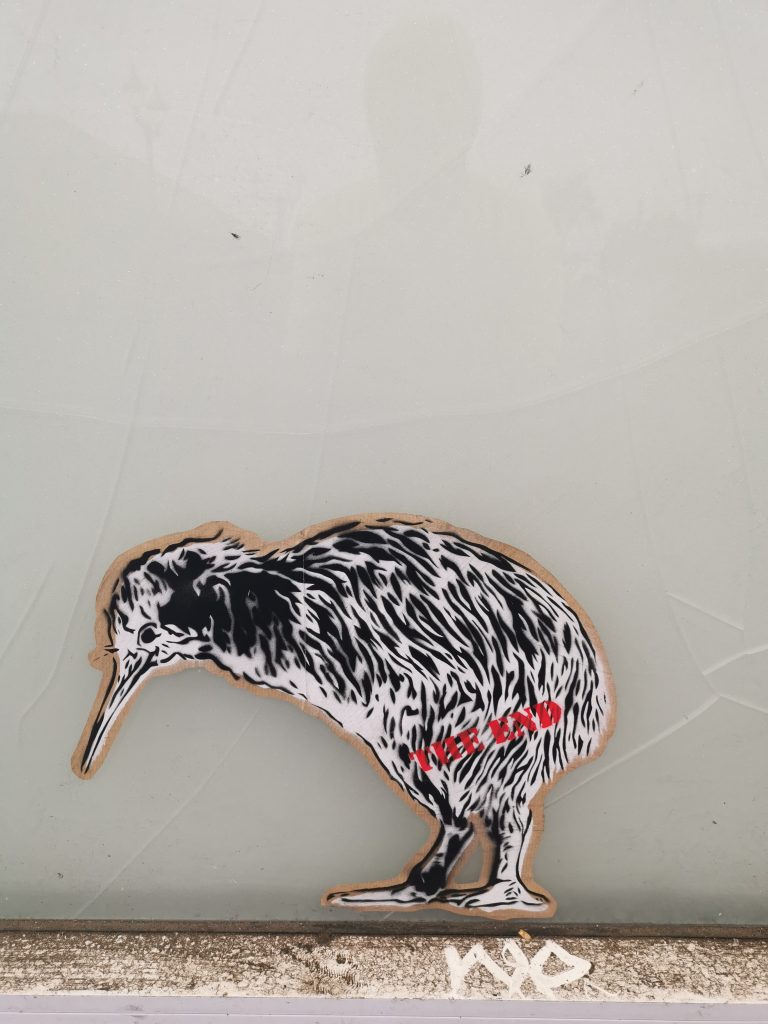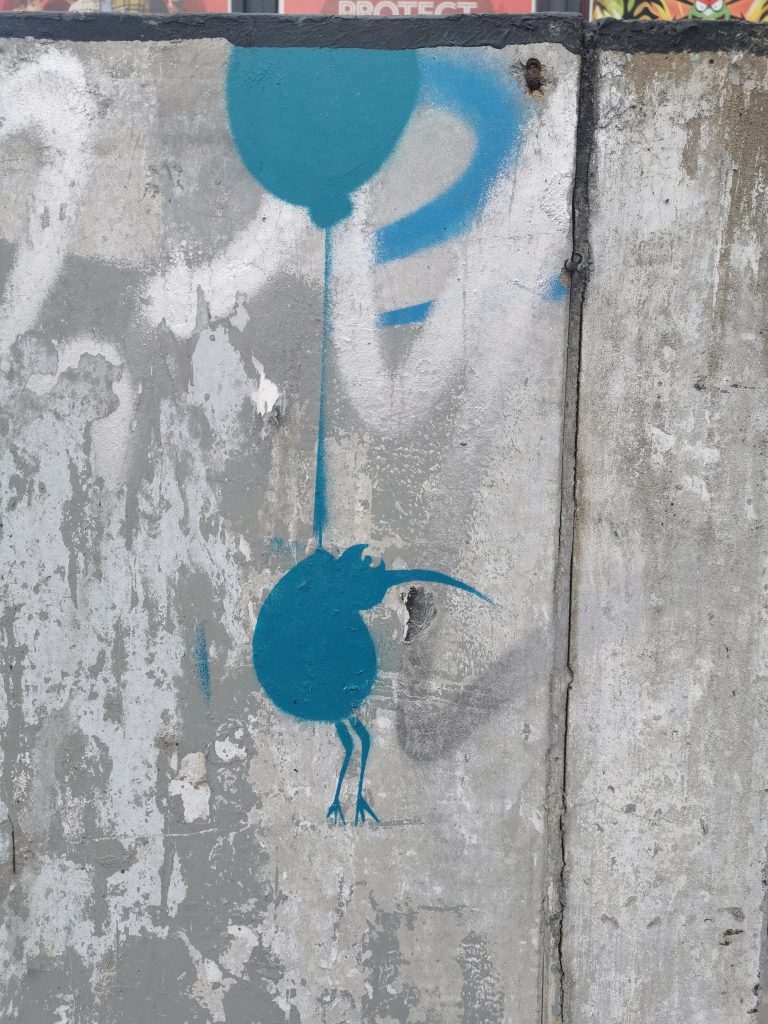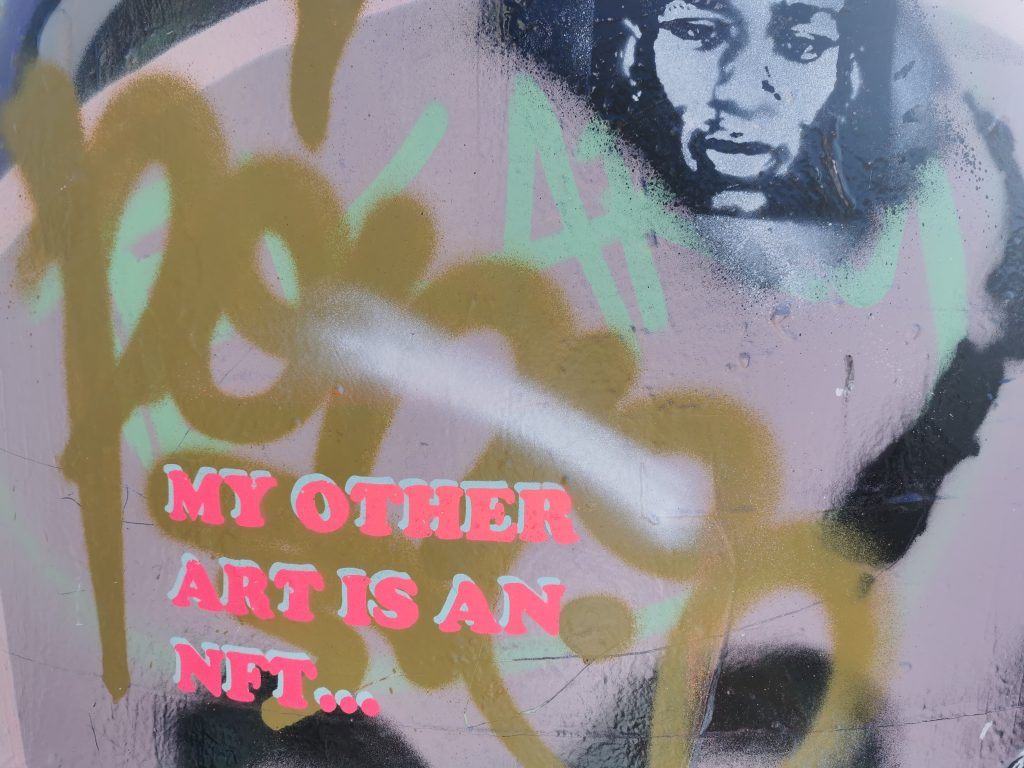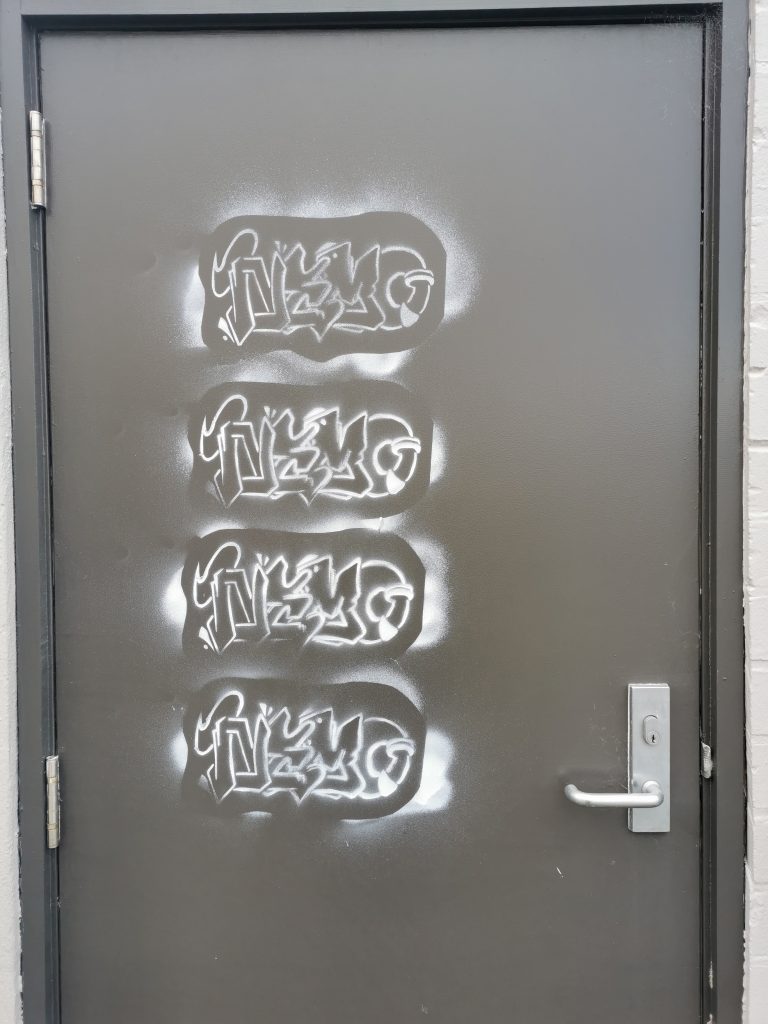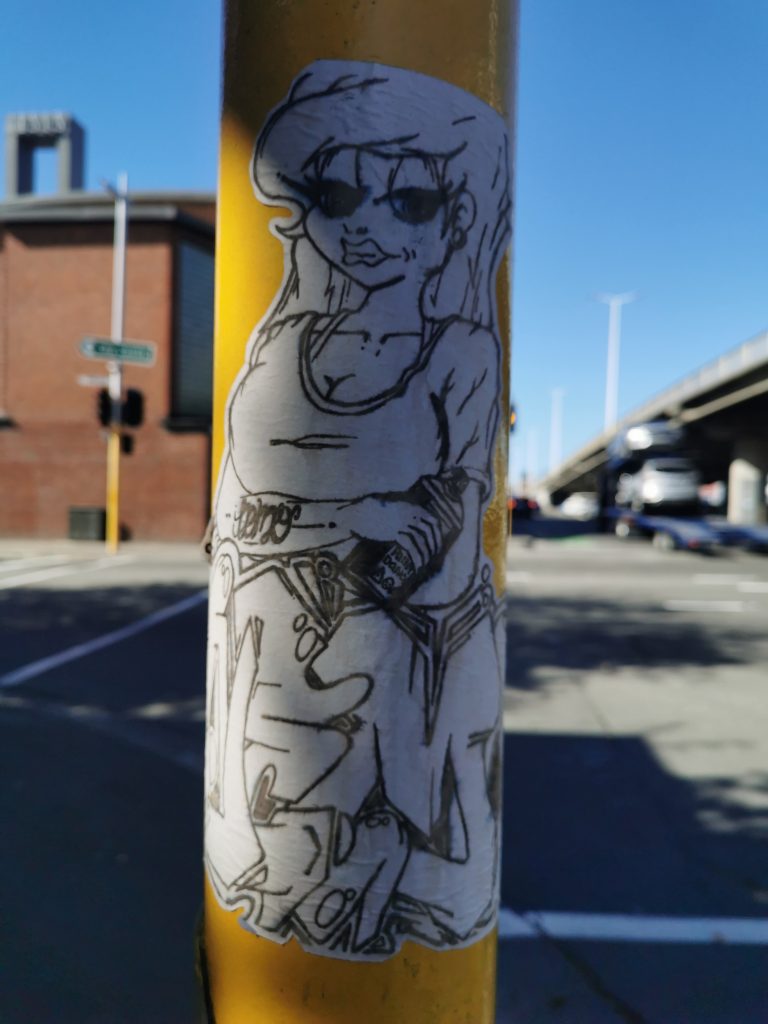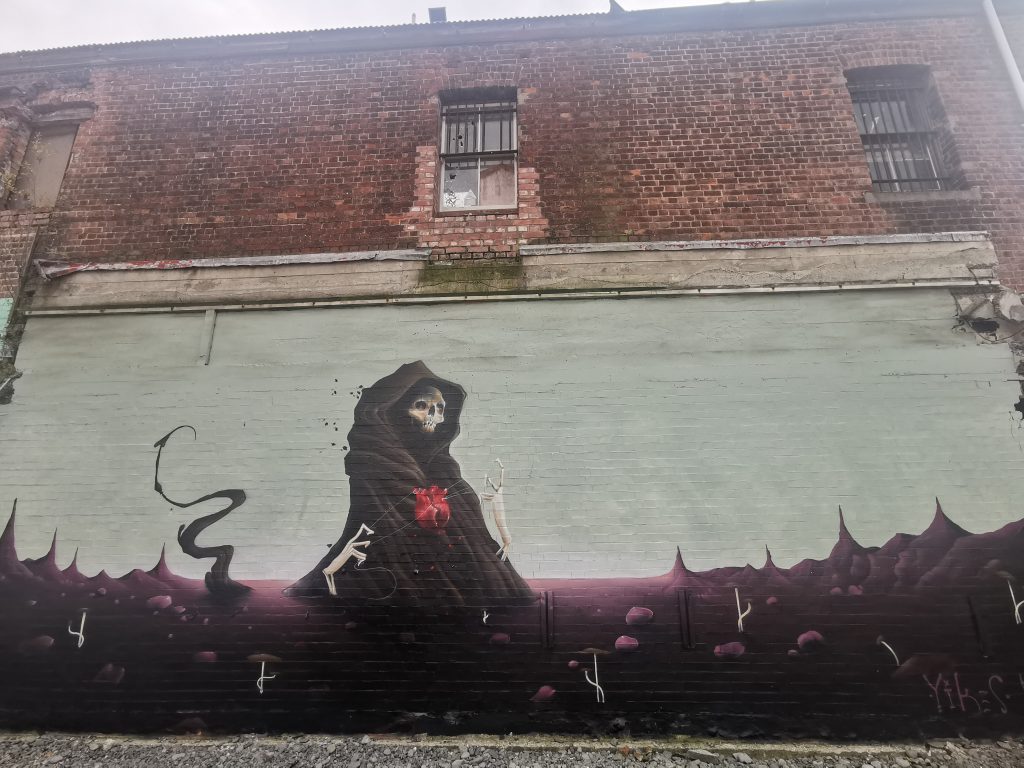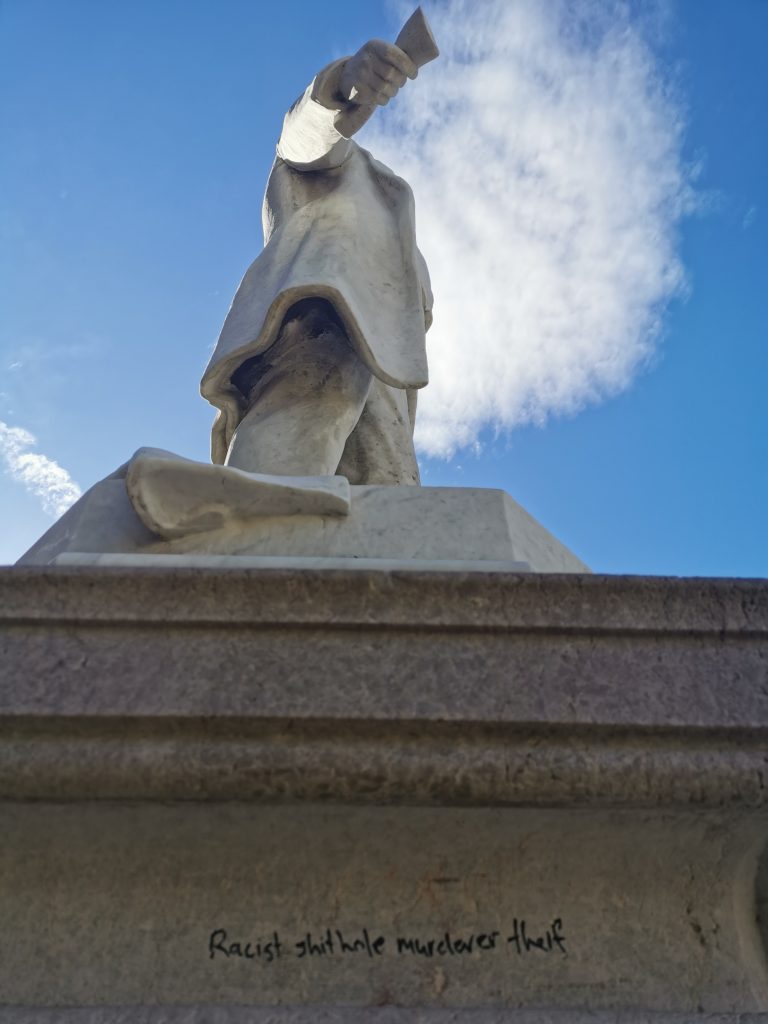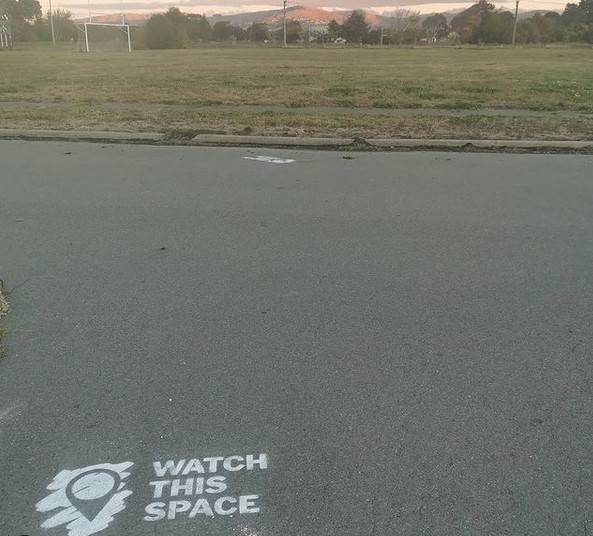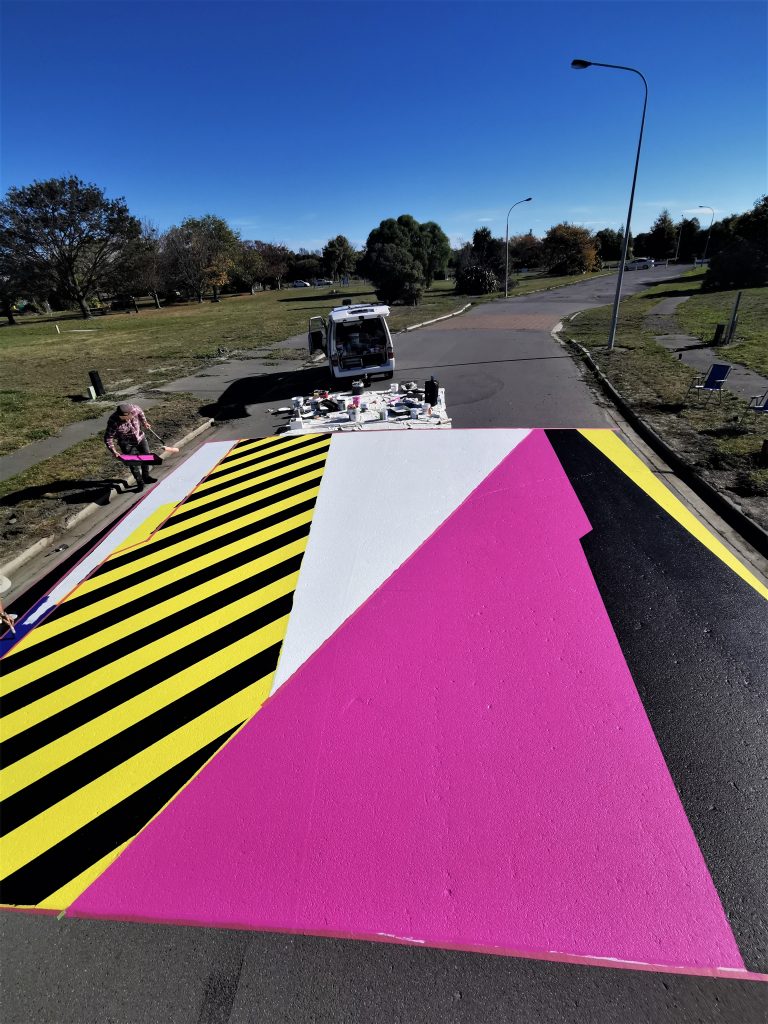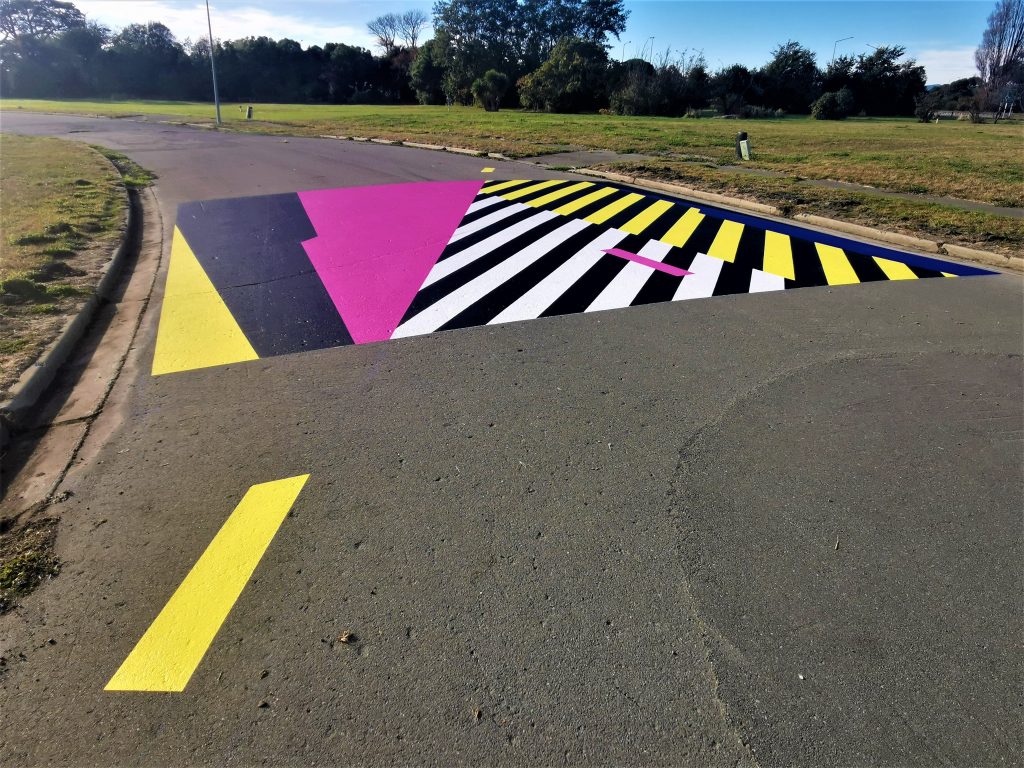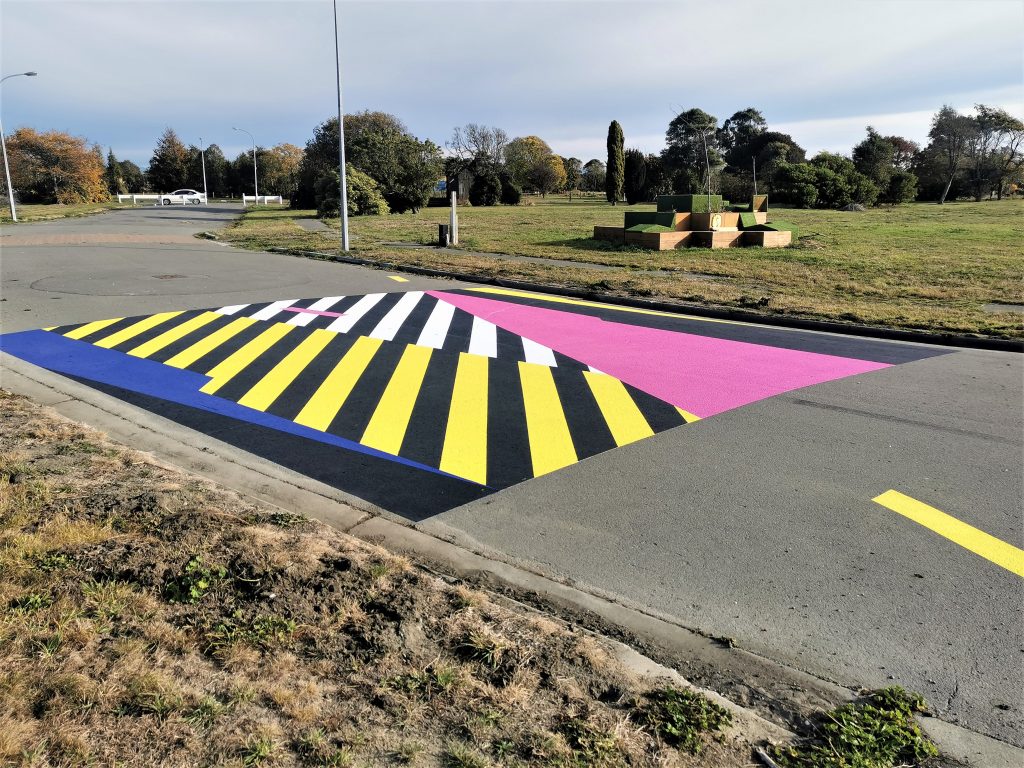Back in November, we caught up with our good friend Dr Suits to chat about his experience at Taupo’s Graffiato festival, Aotearoa’s longest running street art festival, what he didn’t let us know at that time was he was in talks about a massive mural on the grounds of Akaroa Area School. Akaroa, the picturesque waterside township south east of Christchurch on Banks Peninsula, is not an expected location for such a project – but word of Dr Suits’ ability to produce bold, striking mural works had obviously spread. In January 2022, Dr Suits and Porta loaded up and headed to Akaroa to spend a week transforming the junior school with colour and the result, Polymorph, is stunning. When he got back we sat down to talk about the project and the technical process…
____________________________________________
How on earth did you find yourself painting such a massive ground mural in Akaroa?
It’s funny, the last thing I talked to you about was Graffiato (the street art festival in Taupo). As soon as I got off the plane in Rotorua after leaving Taupo, I checked my emails, and I had a message from Ross, the principal of Akaroa Area School asking if I would be interested in painting the junior area of their school. He didn’t really give away too much in terms of what he wanted, but it was quite exciting, especially having just painted at Graffiato…
You must have felt like you were on a roll! How did you get on their radar?
One of the teachers showed Ross an article about Crossings, the red zone work we painted last year, and he must have thought, that looks good, this artist can paint a ground! I have a ground that needs some paint, so it’s perfect…
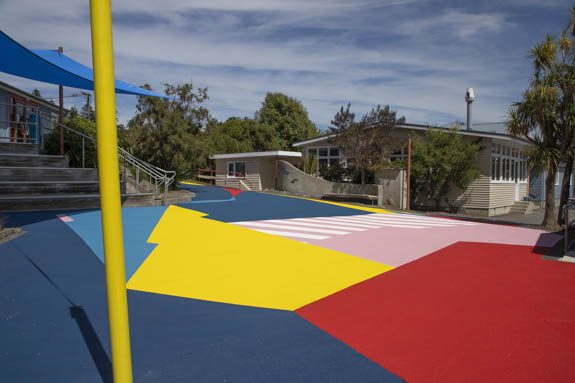
Did Crossings inspire the concept or were they already sold on the idea of painting the ground?
They wanted to paint the junior ground and after a conversation with them, they had some really clear ideas about what they wanted. When they asked me to quote the area, I was like, far out, how have this school got the money for this? To go through the design process with a school, I’d imagine it would be quite a long process…
I imagine there are a lot of stakeholders that must be consulted…
Yes. Their ideas were directed at traditional games and instructing children to play in a certain way and interact with the space in a very traditional way, like we probably would have interacted with spaces when we were kids…
You mean like hopscotch, that sort of thing?
Yeah, like Four Square, roads to follow, those types of things. I knew I wasn’t going to have a lot of creative freedom, so I just quoted the job. Anyway, Ross got back to me and said we can’t afford that, which I was expecting, so I called him back and I said, what is your priority? Is it to have those traditional elements, or is it to get a whole lot of color on the ground? He said if we can get that area covered, that’s the priority. So, I got talking to him about how we could make that happen, just using a more mathematical approach to working out surface areas and ordering smartly, basically designing according to how much material would be used…
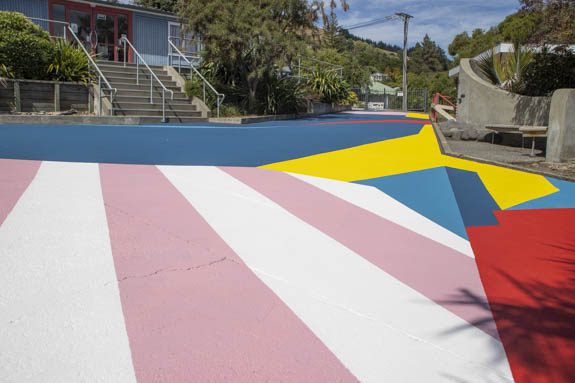
So, you figured out a formula to achieve that?
It was quite challenging. I hadn’t really approached the design process in that way before, I usually approach it more artistically. I’ve done it in fashion design, where you’re really conscious about material and how to maximize the design based on materials, so I kind of used that thinking. Basically, I tried to keep the design quite simple and geometric, because curves would slow me down, details would slow me down. I did a few concepts and gave them to my friend Roberto who put them into CAD, and he worked out their surface area, and then I calculated how much product I would need, and I tweaked it from there. I also had to consider the surface of the ground, because if it’s rougher, it’s going take more product, yellows and pinks will need more layers. So, I reduced the yellows and pinks and added more blues, because they cover the ground really well. It was all about efficiency, really.
You’re known for your color palette, particularly in your outdoor mural works and those pinks and yellows are pretty prominent. Was that a challenge to minimise those colors?
Yeah, it wasn’t a challenge as such, but I had to have some in there!
Did you use the paint product that you used for the basketball court in New Brighton?
A similar product.
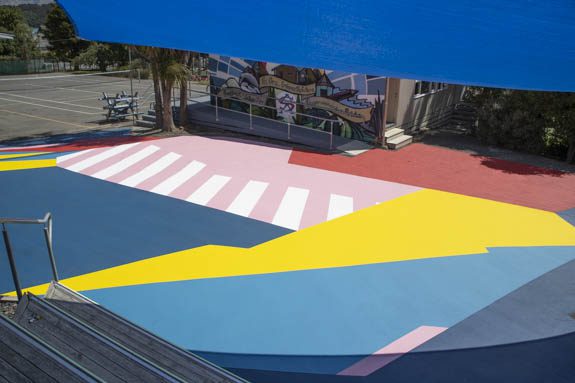
Which is different to the standard paint that you used in the red zone. So, how did you go about sourcing the paint?
There were a few contenders, but it came down to durability and workability. I’d seen another company that used the same product, and I could see what it looked like in a similar context. I also had conversations with the sales rep. There are a few products within their range that are similar; some are acrylic, some are water-based, which is great, there were others that were chemical-based, which I wanted to avoid. I wanted to avoid playing around with solvents, which are unpleasant to work with and to clean up…
Particularly when you are doing such a massive job as well, that would have required a whole heap more gear just to get the job done…
Yeah. The paint company rep was great, he was really helpful. He probably got sick of me asking questions!
So, this product will be your go to from now on?
Absolutely, I got my head around how to use the product, putting the hardener in, laying it out. I had to get scales, a paint mixer and a few more things. The scales were a bit more expensive than I bargained for, but they came in extremely handy. I mean I couldn’t have done the job without either of those tools. There are different options for the application, the rep even recommended spraying it…
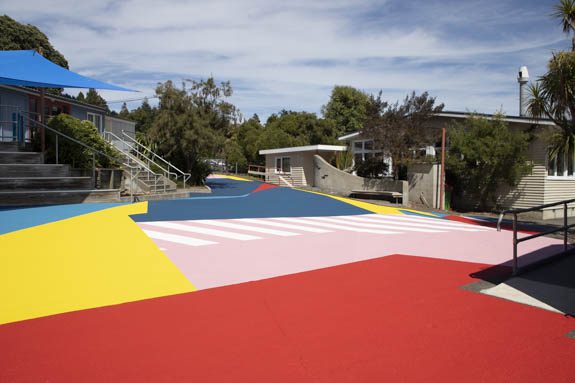
With a pressurized sprayer? Were you tempted?
Spraying would be OK if you had a sprayer, but you’ve got to take into consideration masking, the wind, clean up and waste, and I wanted to reduce waste. Basically, once this product is mixed together, you have to use it within 40 minutes.
Was it a case of the old ‘measure twice, cut once’, or was there still a little bit of figuring out as you went?
I used a grid system, which meant I could get pretty accurate with the layout and composition, which kept me to plan, but when we were putting down the first coats, if there was half a bucket of product left, I’d improvise and chuck it in somewhere to break it up a bit…
How close was the original design to the finished piece?
I’d say 85 per cent. There are a few add-ons here and there…
That’s always good for the creative process, right?
When I was designing it, I was working on such a small scale and when I actually got into the space, it was so much bigger than the piece of paper or the screen that I was working on. It definitely changes the perception of it. I think one of the coolest parts about the project was being immersed in that color as you’re working on it, really experiencing how colors change when you put them next to each other.
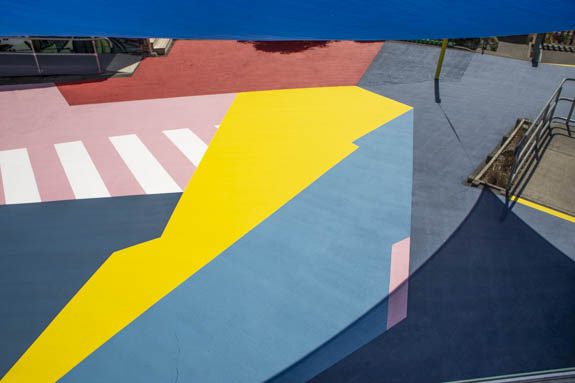
What was the area in square metres?
360 square meters.
Did you look at any comparable mural works in Christchurch? Do you know of any other similarly scaled works?
I didn’t even think about that. I was just focused on the task at hand. But, just to give you an idea of what that looks like, the longest straight line on it was 28 meters.
Wow! On that first day when you started painting or even just gridding it out, did you have to stop and ask yourself: am I going to be able to do this?
No, I’d done all that after I took the job on and designed it and been paid the deposit, that’s when I was like, shit! Am I actually going to be able to do this? It wasn’t until I went out there and had a good look around that I was like, OK, it’s not as big as I’ve built it up in my head.
Did it help as well that you had your trusty compadre, Porta, there with you?
Oh yeah! I’ve said it before and I’ll say it again, Porta’s the man!
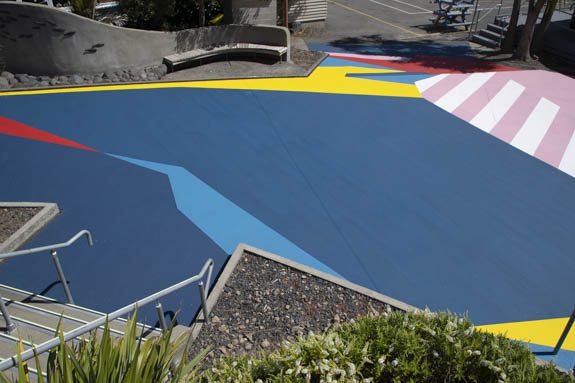
There were certain restrictions based on the colour palette, and you had to encourage them to move away from including those ‘instructed play’ elements, but was the final design based on any particular concept or idea other than dynamic shapes and space for play?
That’s it, just dynamic shapes and spaces. I used my trusty collage technique. I cut out some shapes and piece them together, and just subconsciously come up with something.
Have you been able to get feedback yet?
I sent Ross a message on the first day back at school to ask about the big reveal on the first morning of school, his reply was: ‘Awesome!! Thumbs up’. So, I figured, it must have been a big day…
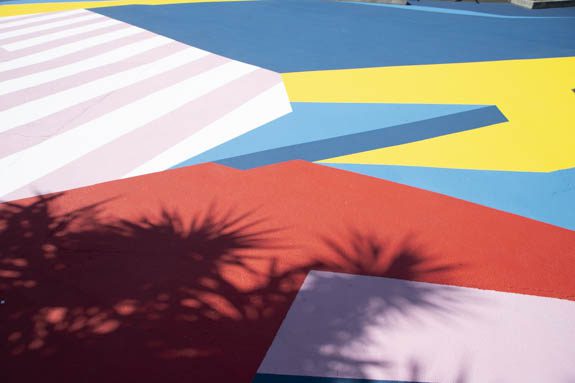
Was it disappointing that you didn’t get to see that first response of the kids yourself?
Yeah, I was a little bit, but as we were working on it, people would walk past daily and even when we had one or two blocks of color down, people were pretty excited. It really started coming together towards the end, I knew as soon as we got the yellow down it would really start to come to life, and then when we put the final blue down at the end, that just tied it all together.
You also added a little touch where you painted a pole bright yellow?
That pole’s funny because I’ve always wanted to do a sculpture exactly like that, with a just off axis yellow line…
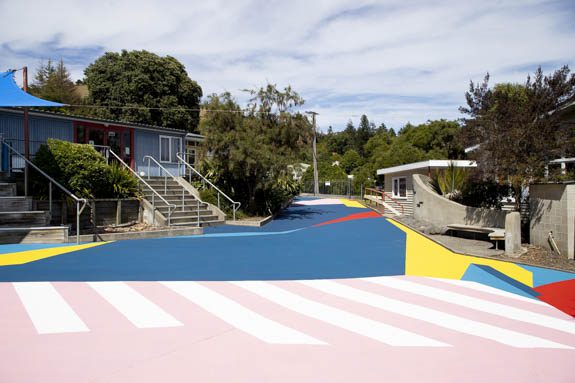
You finally got to do it! I was going to say that one of the great aspects of projects like this, and we talked about this with your court in New Brighton, is the way they encourage movement of bodies through and across these spaces (which allows people to engage with and respond to abstract art, even unwittingly). It would be really cool to have a drone video that shows the students moving across the mural.
Ross got some drone footage, with his kids walking on it, not playing unfortunately, but it will be really cool to see. With the COVID situation, schools have been really encouraged to get kids outside, and this work will really help with that…
An unforeseen practicality! Doing something in a place the size of Akaroa, I guess the work would reach the whole township. You said some people came past and saw it, did you get a sense that people were hearing about it and the word was spreading?
I think so. I did have that realization that we could have quite an impactful reach. Basically, if you are a family in that town with kids, they go to that school, and if you grew up in that town, you went to that school. So, hopefully people will be really excited about what we added to the school. The school is a really amazing environment, it’s nestled next to a hillside, there are a lot of native trees and birds, it was really beautiful to just hang out there painting…
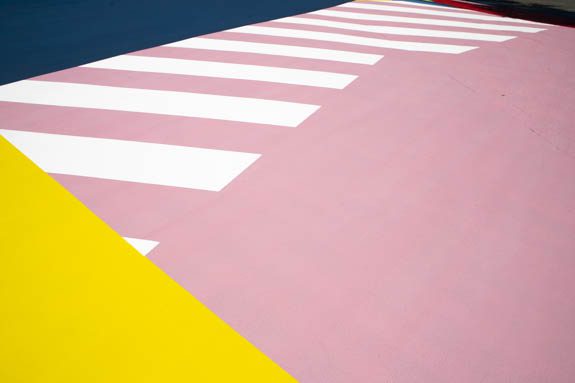
Now that you’ve done something to this scale, it sets the precedent. How do you go about finding some new places to paint?
The school got funding from the Ministry of Education for the project and a couple of other projects around the campus, so my next task is to put it all together in a nice little package and reach out to more schools, find out what the funding was and how to go about getting it. Then just push them to apply for the funding to get something like this…
You will be taking more notice of school grounds now I imagine!
There were a lot of restrictions around this project, which made it good for the first one of this scale. Those restrictions really helped make it achievable and set boundaries, so I couldn’t really go too crazy with the design and get in over my head, which could have easily happened. I was learning a new product, I was out of town, if I ran out of something it wasn’t like I could just nip down to buy something. The product had to be ordered in from Auckland. So, if I get another job, closer to home, I’ll be able to push it a bit further and explore the color palette…
Follow Dr Suits on Instagram to what he has in store next!
All images supplied by Dr Suits
